News & Events

Lynx Global asks; what's China's role in promoting global forest governance and combating deforestation?
July 5th, 2023
Over the past 20 years, demand for timber products in China has soared as incomes have risen. Two years after 1998’s devastating floods, China launched its Natural Forest Protection Programme to protect the headwaters of the Yangtze and Yellow Rivers, which became a full logging ban on all natural forests in 2017. To meet rising demand for timber, China’s domestic production grew 50%, sourced mainly from new plantation forests.
Meanwhile, timber imports overtook domestic production in 2014 and swelled to nearly 300 million cubic metres of forest products (roundwood equivalent – RWE) in 2018. China is now the world’s largest timber importer – mainly in the form of unprocessed logs, sawnwood and wood chips. About two-thirds of the world’s tropical logs were exported to China in 2018.
China is also the world’s largest exporter of wood furniture and wood-based panels (plywood in particular). The US is China’s largest export market, followed by the EU (including UK), Japan, Australia and South Korea. Since 2008, China’s major timber export markets have introduced regulations to ensure only timber from legal sources can enter their markets. China’s domestic market for timber products is now huge compared to the export market. However, the concern is that while export markets demand certified timber, domestic markets do not. This issue needs to be addressed through a mix of regulations and incentives.
China's role in the international timber market has changed fundamentally in the last ten years. Up until the late 2000s, China was a major producer and exporter of timber products, with a focus on meeting the legality standards of the EU and US markets. With the growth of domestic timber consumption, China's measures to combat illegal logging abroad will play a crucial role in improving global forest policy.
On July 1, 2020, Article 65 of the newly revised Chinese Forest Law came into effect. It clearly states: “Wood processing companies should keep accounts of the incoming and outgoing raw materials and products. No entity or individual shall purchase, process or transport timber clearly known to have been illegally or indiscriminately logged in forest areas.”
After joining the WTO in 2001, China significantly reduced import tariffs on timber products. China's main timber export markets have adopted measures to combat illegal logging, including the EU Forest Law Enforcement, Governance and Trade (FLEGT) Action Plan in 2003, the 2008 amendment to the US Lacey Act and the EU Timber Trade Regulation in 2013. China also signed sustainable forest policy agreements with the US, EU, UK, Japan, Australia, Indonesia and others.


Lynx Global asks; how successful is China's climate challenge: financing the transition to net zero?
June 5th, 2023
China has the most ambitious net-zero target of any country in the world, so it needs to ensure it can fund a zero-carbon transition. China is fully committed to having a decarbonized economy by 2060, a daunting goal.
For more than 15 years, it has been the world's largest emitter of greenhouse gases due to its heavily industrialized economy. A unique challenge that the world's second-largest economy will face as it transitions to carbon neutrality is balancing its decarbonization ambitions with the need to sustain a compelling rate of economic growth.
At the 26th United Nations Conference on Climate Change (COP26), held in Glasgow, Scotland, from October 31 to November 13, 2021, China and the US agreed to step up climate cooperation next year
Decade.
In a joint statement, the two countries called for increased efforts to close the significant gap that will be necessary if the world is to meet its goal of limiting average global temperature increase to 1.5°C as stipulated in the 2015 Paris Agreement. They renewed this commitment to work together at the Forum's 2022 annual meeting in Davos.
Despite these bold words, China's journey to a zero-carbon future has only just begun. In the coming decades, China will have to invest heavily in economic transformation in three sectors in particular, which, in addition to energy, dominate the country's CO2 emissions: steel, mobility, and construction and real estate.
Covering the R&D expenses required to identify and develop the necessary new technologies and paying for the new machinery and equipment that must be purchased and installed will require an immense amount of funding. There are three areas where changes are needed to enable these shifts:
– Financial innovation, particularly in finding ways to structure loan packages to meet the needs of long-term borrowers facing higher costs and/or lower margins.
– Collaboration, particularly between different actors within an industry, which can incentivize firms to produce or use
sustainable products and inputs.
– Political support, particularly in the areas of standards and tax incentives, to discourage undesirable behaviour, for example through the imposition of carbon taxes, and to promote desirable practices, such as tax breaks for environmentally friendly products and services.


Lynx Global explains; a freshwater future: without blue, there is no green economy
May 5th, 2023
In today’s challenging global context, water’s role as an enabler and impact multiplier to transition to a green economy is ever more critical.
From flood and drought to fire and famine, the impacts of climate change are being felt across the globe. In 2021, economic losses from climate and weather-related disasters totalled an estimated $329 billion, the third costliest in history.
Governments and industries around the world are responding with an array of goals, commitments and strategies in the race to net-zero carbon and a green transition. But, they are failing to include water as a central part of decarbonization strategies and roadmaps to success.
While awareness of greater water-related business risks driven by climate change has grown, and the need for water security has gained attention, the topic is often seen in competition for attention and resources with other sustainable development priorities.
However, water can be used as a universal lens to focus on, serving as an enabler and impact multiplier. Water has the ability to enable economic activity to grow and human health to thrive both directly (through a healthy environment) and indirectly (where green infrastructure leads to better mental health outcomes), as well as contributing to resilience and sustainable development agendas in less obvious ways.
This white paper shines a spotlight on opportunities and highlights examples of companies taking action. It provides insight on how water can unlock multiple gains to stimulate discussion and mainstream best practice to become common practice.
The hope is to inspire a broader set of leaders to take action and create a groundswell movement of even bolder ideas in the lead up to the UN Water Conference – the first in over 40 years – taking place in March 2023.


''Sustainable investment pathways are waiting for us'', says Lynx Global
April 5th, 2023
Sustainable Investment Pathways (SIP)'s purpose is to:
– Serve as an impartial platform, raising awareness of the conditions needed to unlock greater sustainable investment
– Stimulate dialogue on regional and thematic financing agendas for greater impact
– Map out various sustainable investment initiatives relevant to the sector or value chains that may overlap or be complementary
– Create alignment among a diverse set of players and reduce inefficiencies to produce a more supportive ecosystem and mobilize investment towards meeting the SDGs. This is particularly useful for policy-makers, MDBs, DFIs or donors interested in pooling their funds and efforts to support larger, more efficient programmes
– Inspire public-private initiatives and action to bring forth new or additional sources of investment for the SDGs
– Provide a platform for an agile, targeted and inclusive approach to ideate solutions that are needed to either stimulate nascent or subsidydependent markets to graduate into commercially viable markets, or allow relatively mature markets to scale further for greater impact
The value proposition of the SIP is flexibility and adaptability to prioritize needs and leadership to:
– Facilitate greater private-sector involvement in shaping sustainable investment solutions and innovative financial products, services or facilities
– Generate a multiplier effect across existing initiatives under a common agenda by encouraging synergies across different sectors
and types of stakeholder (public, private, domestic and foreign)
– Create opportunities for replication across other countries, regions and similar markets; for instance, among Small Island Developing States (SIDS)
While the above objectives will be central to the SIP initiative, the process, scope and timelines will be nuanced depending on the context, sectors or value chains. In general, putting in place an actionable pathway consists of three main steps:
– Agree on the destination: Identify and agree on priority sectors or value chains in need of greater coherence and investment in terms of the SDGs, complemented by clear privatesector interest. This will be achieved in consultation with and led by global and local public- and private-sector market players
– Agree on how to get there and what the obstacles are: Determine the risks and barriers preventing greater coherence and investment, and identify policies, innovative solutions and financing mechanisms to build a more coherent and collaborative SDG investment ecosystem
– Agree on “who and what” is needed: Define and agree on the actions and actors needed to complete the formulation of an actionable SIP


Lynx Global explains; transforming food systems with farmers: a pathway for EU
March 5th, 2023
Food and agricultural systems are one of the backbones of society, providing the sustenance that is essential to life. They are also central to the global economy, contributing close to 10% of global GDP and over 35% of all jobs. At the time of publishing, the Russia-Ukraine conflict has further underscored the vulnerability of food systems and highlights the critical need to address structural weaknesses affecting the environment and food systems around the world.
The most recent Intergovernmental Panel on Climate Change (IPCC) Assessment Report confirmed that climate change and related biodiversity loss “have affected the productivity of all agricultural and fishery sectors, with negative consequences for food security and livelihoods”, especially for the most vulnerable. However, food systems can be a determinant in solving these global crises by addressing their environmental impact and deploying innovative solutions. International frameworks and governance mechanisms are waking up to this fact, with the UN hosting the first ever Food Systems Summit in late 2021 and the Egyptian presidency for COP27 indicating a possible push to incorporate food and agriculture systems into the formal negotiations.
Climate-smart and regenerative agricultural practices and digital innovations already show great promise in helping to mitigate these trends of climate change and biodiversity loss. Yet achieving the adoption of these practices and technology at the scale and speed required demands a new approach. Farmers are the stewards of half of all land on Earth and produce 95% of our food and yet, 65% of the world’s poorest people are farmers. We must therefore work with farmers and leverage the innovative capacity of local communities to design, deploy and scale solutions adapted to their varied socio-economic and ecological realities.
This report, developed in collaboration with Deloitte and NTT Data, takes the practical case of the European Union to understand the pathway required for a farmer-centric food systems transition. Its findings show that if just 20% more farmers adopted climate-smart agriculture, by 2030 the EU could reduce its agricultural greenhouse gas emissions by an estimated 6% and improve soil health over an area equivalent to 14% of the EU’s agricultural land while improving farmer livelihoods by between €1.9 and €9.3 billion annually by 2030.
The feasibility and impact of this transition will depend on the collective ambition and actions of all stakeholders. This report outlines a pathway to address the economic, institutional and technological challenges currently hindering the case for change within the EU. It was developed with the support of the multistakeholder EU Carbon+ Farming coalition in response to a call from the Executive Vice President of the European Commission leading on the EU Green Deal and is part of the broader World Economic Forum’s 100 Million Farmers platform.
No region in the world will be spared from the imminent threats to our interconnected food systems, climate and the natural ecosystems upon which they depend. We encourage all food systems stakeholders around the world to take a farmer-centric approach and to harvest and share the evidence on the opportunities and innovations for food systems transformation for climate, nature and people.


"It’s time for a Test Run", says Lynx Global
February 5th, 2023
Test Run is a solid opportunity for you to transparently see how we work with our customers and supplier partners and the best way to experience the same benefits. It’s a chance for our organization to demonstrate you the savings and gainings that you can obtain through cooperating with us and a risk-free way for your company to understand the benefits of having the professional partnership of our agile team and finally a completely free of charge operation that we provide in an open and transparent manner, even without any obligations to make a contract.
Every single Test Run is a challenge for our agile team, that begins with our receiving the detailed informations regarding the business unit to define the way of function, the industrial sector to understand the field of activity with its related needs and expectations and finally the products and services subject to the Test Run to focus on the targets in the supply chain management, with purchasing and procurement operations side or in the business development, with marketing and sales operations side.
This challenge is our passion. It’s the motivation charging us to focus and take action. It’s the energy source for our agility at work. There’s nothing to lose for your company by taking a Test Run and there are a lot of savings and gainings could be obtained on the other hand. Test Run has been transformed into a smart and useful advertisement by our organization that is successfully spotlighting the savings and gainings we have been realizing for our customers and supplier partners in key industries that they have been operating in.
As the result of the Test Run; once we’ve delivered considerable amount of savings and gainings through our successfull cooperations in our related business units to our customers and supplier partners, we always experience that; they insist on continuing the already started cooperation with the officially contracted full version of it including the improvement and development services we provide for their supply chain management and business development operations. This is how most of our customers and supplier partners begin their relationship with us.
However; they also generally ask to us for experiencing another cooperation and its related operations in one of our other business units as soon as possible. Try it and you will see it is indeed a simple and enjoyable process. There is not any cost or contract and all in a completely open and transparent service structure. From the smallest volume of any product or service to the largest ones and you make the choice of cooperation structure and subject to focus on. Get in touch with us now. Start your free Test Run today.

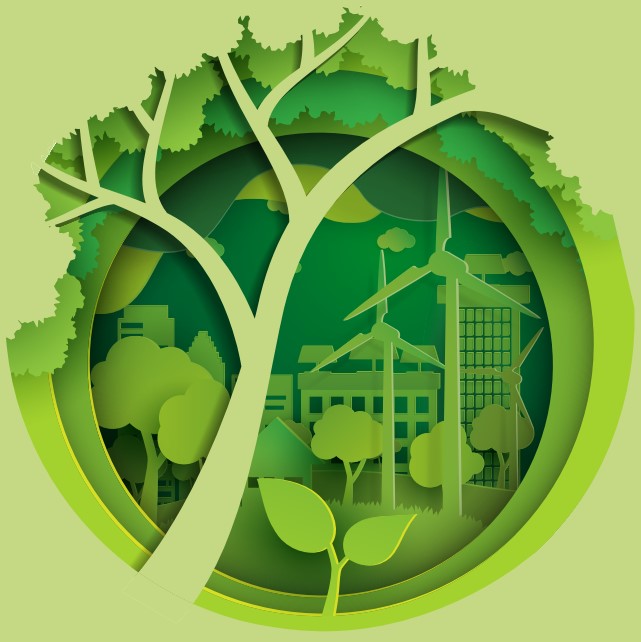
Lynx Global asks; are we accelerating the decarbonization of buildings as needed?
January 5th, 2023
The transition to a greener built environment requires a shift in how value is defined and perceived. With over half of the world’s population living in cities and producing over 70% of carbon emissions, cities play a key role in combatting climate change. Construction and the operation of buildings are responsible for 38% of global emissions, and there is an urgent need for solutions to help accelerate the decarbonization of the urban built environment to limit the global temperature rise to below 1.5°C.
Although some leaders in sustainable buildings have started to consider social and environmental impacts in their decision-making, many obstacles to investment in net-zero buildings still relate to financing, both real and perceived. The World Economic Forum’s Net-Zero Carbon Cities Building Value Framework seeks to accelerate investment by overcoming these barriers.
The framework proposes that a more holistic decision-making approach, which recognizes the importance of social and environmental outcomes and system performance, is key to increasing capital flow towards decarbonization solutions. The framework guides decision-makers to connect nonfinancial benefits such as “user satisfaction” and “systemic value efficiency” and correlate them with reducing risk or increasing return on investments.
Net-zero buildings are an essential tool in achieving global emissions goals. In addition, as energy systems evolve towards net zero, buildings will play a larger role in the energy system. Matching electricity supply to demand is a balancing act and buildings can host new distributed resources, store power and optimize demand to help strike this balance.
The Building Value Framework has been developed and validated through case studies to understand the investment decisions and evaluate outcomes in real projects. From this process, key insights and a practical checklist (focusing on reducing operational emissions) have emerged to maximize value creation, as illustrated through the presented cases.
The flexibility of the Building Value Framework means it can be used for the retrofit and refurbishment of existing buildings, as well as for the construction of new buildings. It can be applied in diverse contexts across different types of building assets and used at any point on the investment planning and decarbonization timeline.
The urgency to transition the world’s cities towards a net-zero carbon future is abundantly clear. The Building Value Framework presents an approach to help accelerate the investments needed to deliver a greener urban built environment.


"Human-Centred artificial intelligence is the future of human resources", says Lynx Global
May 5th, 2022
Artificial intelligence (AI) has gained considerable attention and excitement in recent years. Broadly defined as the effort to program computers to take on human-like cognitive processes, the recent prominence of AI is closely tied to the success of machine learning (ML), an approach to developing AI systems using real-world examples. The ML approach is applicable to a surprisingly wide variety of use cases; therefore, there is a proliferation of AIbased tools in every sector of the economy and of life.
The field of human resources (HR) is no exception. Indeed, by one count there are over 250 different commercial AI-based HR tools available. These tools offer a lot of promise and excitement. Beyond their ability to process information quickly, these tools have the potential to improve HR processes, leading to better decisions and outcomes. Their variety reflects the creativity and innovation spurred by recent advancements in AI, as their developers seek to both tackle long-standing challenges in HR and expand capacities into new realms.
At the same time, this proliferation and variety of tools forms a confusing landscape to navigate, especially because most HR professionals do not feel that they have the technical expertise required to evaluate these tools. The first goal of this toolkit, therefore, is to equip HR professionals with a basic understanding of AI to assist them in their efforts to assess AI-based tools.
The second goal of the toolkit is to provide guidance on the responsible and ethical use of AI in HR. Awareness of the ethical challenges that AI systems can pose has been growing in recent years, concerns that are particularly heightened in the HR context. There is increasing consensus globally about broad principles for the ethical use of AI, including privacy, fairness, transparency and explainability, but only limited guidance on how to operationalize these principles. This toolkit is part of a broader effort by the Centre for the Fourth Industrial Revolution to help organizations put responsible AI principles into practice.
The final goal of the toolkit is to help organizations use AI-based HR tools effectively. Many organizations find their investments in AI fall short of their expectations because the tools are adopted for the wrong reasons, they do not anticipate the work necessary to integrate the tool, or because they did not gain sufficient buy-in from the people who were supposed to use it or are affected by it. The toolkit and especially the accompanying checklists, therefore, focus on assessing AI-based products and on the organizational practices needed to support their use.
At one end of the spectrum are individuals who are very concerned about the potential downsides of using AI in HR. At the other end are individuals who, while recognizing the need to implement AI responsibly, strongly believe in the potential of AI-based tools to improve HR outcomes. At which end are you?


Lynx Global warns; innovations to help tackle societal challenges are on the way
April 5th, 2022
Think of our planet’s grand challenges: managing climate change; reducing energy use; sustaining food production; improving global health. Many of these efforts involve overlapping problems and the potential for interlinked solutions. It’s no wonder the United Nations names “Partnerships” as its 17th Sustainable Development Goal.
In this 10th edition of the Top 10 Emerging Technologies, created by Scientific American and the World Economic Forum, interlinking is front and centre. With the acceleration of government and industry commitments for decarbonization, there will be an array of novel approaches in low-emissions transportation, residential and commercial infrastructure, and industrial processes. Two such technologies – the production of “green” ammonia and engineered crops that make their own fertiliser – will improve agricultural sustainability. In remote areas, 3-D printing with local soils will erect stronger houses with less energy.
Because health is on everyone’s mind, this year’s Top 10 salutes the rise of breath sensors that can detect COVID-19 and other diseases, as well as wireless biomarker monitors that make it easier to diagnose and manage chronic illnesses. New results from the field of genomics could allow for the engineering of longer “healthspans”, and on-demand drug manufacturing will result in tailored medicines while helping to solve today’s supply challenges with large-scale production. The future has never looked so interconnected.
Top 10 Emerging Technologies of 2021 coud be mentioned as below;
Decarbonization rises: Sweeping commitments to address climate change will birth new technologies.
Crops that self-fertilise: Root-grown instead of sown.
Breath sensors diagnose diseases: Puffing is far faster than drawing blood.
On-demand drug manufacturing: Making pharmaceuticals where and when they are needed.
Energy from wireless signals: 5G will help power the internet of things.
Engineering better ageing: A focus on increasing “healthspan”, not just lifespan.
Green ammonia: Reducing the CO2 footprint of fertiliser production.
Biomarker devices go wireless: Continuous, non-invasive monitoring of chronic diseases.
Houses printed with local materials: Concrete is swapped for soil.
Space connects the globe: The internet of things goes into orbit.
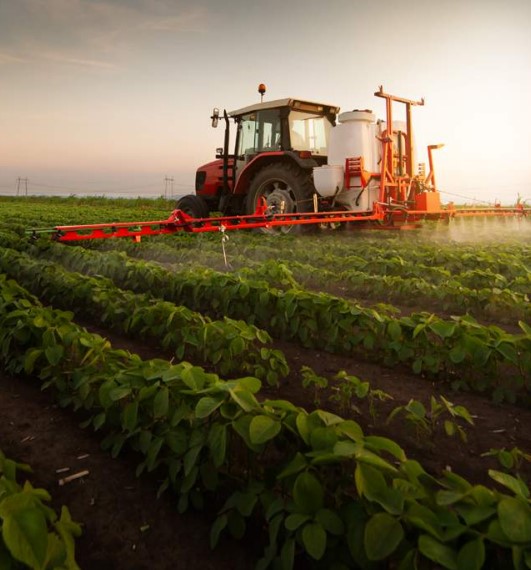

Lynx Global explains; increasing climate ambition: analysis of carbon price floor
March 5th, 2022
We know global warming, caused by the increased concentration of greenhouse gases (GHGs) in the atmosphere, is a serious threat to human health, ecosystems, infrastructure, and agriculture. We also know that we need to significantly accelerate global ambitions to safeguard the planet we live on, while ensuring a just transition so people aren’t left behind.
If adopted systemically, carbon pricing has the potential to effectively reduce emissions. But, today the cost of carbon dioxide and other GHG emissions is priced at anything from $0 to over $130 per tonne with varying sectoral coverage in different regions. This creates an uneven playing field across territories and industries, which means there is less incentive for some countries to reduce emissions.
In June, the International Monetary Fund (IMF) put forward a framework to introduce an international carbon price floor (ICPF) that proposes different price points for emissions for economies at different stages of development to incentivize greater participation.
We have modelled this framework in order to explore how this approach would affect countries and specific sectors. The goal was to understand if this could become the starting point to bring about a more ambitious global agreement and inform discussions at the COP26 meeting in Glasgow, and to see how any adverse effects on the most disadvantaged could be mitigated.
We wanted to answer three key questions: could the ICPF reduce emissions significantly, could it be done without severe economic damage to livelihoods and businesses, and could it be done without shifting economic activity and emissions from one part of the planet to another.
The key messages from our analysis are positive: introducing an ICPF could make a significant contribution to tackling global warming by accelerating emissions reduction. This could be done without severe economic damage to livelihoods and business, although the effects would be uneven across the world.
This underscores the need for global action on supporting a just transition to a net-zero world. The revenues generated by an ICPF could be used to support those most disadvantaged. In addition, it would not cause significant carbon leakage, the shifting of emissions from one place to another because of lower taxes.
We understand that these are conditional findings in a complex area where no single lever will be able to move the dial to where we need to be. We hope this research, however, will encourage countries to consider pricing carbon in such a way that it scales up effort to reach net zero in time to limit the worst effects of climate change on people and our planet. Ultimately, humanity’s future survival and prosperity are at stake.


Lynx Global asks; is "fostering effective energy transition" proceeding as required in 2021?
February 5th, 2022
As countries continue their progress in transitioning to clean energy, it is critical to root the transition in economic, political and social practices to ensure progress is irreversible, according to the World Economic Forum's Fostering Effective Energy Transition 2021 report. The Energy Transition Index, which benchmarks 115 countries on the performance of their energy systems, finds that while 92 of the countries increased their score over the past 10 years, only 10% of countries were able to make consistent gains, showing the need for renewed focus and resilience to meet the climate goals of the next decade.
The past decade has established the strong initial momentum to transform the energy system for the decades ahead. The scaling of nascent technologies and an increased focus on climate change have fixed global attention firmly on the decarbonization of energy systems.
This journey is far from over. As of 2018, 81% of the world’s energy was still supplied by fossil fuels, global greenhouse gas emissions rose through 2019 and more than 770 million people around the world still lack access to electricity. The transformation of our energy systems needs to increase its momentum to help achieve critical objectives such as the UN’s Sustainable Development Goals and the Paris Agreement.
Strides made on energy access; reliability is the next frontier; over the past 10 years, more than 70% of the countries in the ETI made progress on the energy access and security dimension, primarily due to improvement in levels of electricity access around the world.
Strong gains made in environmental sustainability, but significant gaps remain; encouraging progress has been made in environmental sustainability over the past 10 years, with countries accounting for 88% of global total energy supply improving their scores on this dimension.
Global average energy intensity fell by 15% between 2010 and 2018. However, this improvement has yet to fully translate into meaningful gains, as the carbon intensity of the energy mix was broadly flat over the same period.
While there has been encouraging progress in areas such as rising levels of investment and political commitment, progress has been far slower in translating ambitions into actions and in realizing the transformation of the energy system structure itself.
The total amount of electricity generated from coal has been on an upward trajectory over the past 10 years. Identifying viable ways for the early retirement of carbon-intensive assets will be needed to accelerate the transition.
However, more efforts are needed to improve the quality of electricity supply in newly electrified areas. This is critical for the delivery of public services, such as testing and vaccination programmes for COVID-19. Moreover, increasingly frequent and unpredictable extreme weather events have exposed the vulnerability of grids, underscoring the urgent need to modernize and enhance the resilience of electricity.


Lynx Global warns; antimicrobial resistance and water: the risks and costs for economies and societies
January 5th, 2022
Antimicrobial resistance from water pollution has grown into a major global health concern: Antimicrobial drugs play an essential role in healthcare systems worldwide. Since their discovery, many infectious diseases that were once leading causes of death can now be treated straightforwardly. But they are losing effectiveness due to the development of antimicrobial resistance (AMR), with between 2.4 and 10 million additional deaths yearly by 2050.
In countries lacking universal wastewater treatment and access to clean water and sanitation, water is a primary vector in the spread of AMR and AMR diseases. Water access and pollution control can have a pivotal effect on AMR development and outcomes.
Microbes are tiny organisms such as bacteria, fungi and viruses. While most are not harmful, some can have adverse effects on human health. Antimicrobial drugs work by killing microbes or preventing multiplication. AMR causes such drugs to become ineffective. AMR can develop and multiply in the environment, including water – acting as a vector in AMR spread and development. Here, waterborne AMR refers to microbes and pathogens that have resistant genes and spread through water.
Environmental factors: The volume, temperature and quality of water into which AMR or AMR drivers are discharged can all affect the spread of AMR. Warmer, more concentrated bodies of water that contain additional pollutants are thought to be more amenable environments for AMR to develop. Economic and climatic trends are expected to increase environmental vulnerability factors. Water availability is expected to become more volatile due to increasing competing demands; water temperatures increase as climate change takes hold. Economic activity will equally increase wastewater flows.
Socio-economic factors: Socio-economic factors determine the impact of waterborne AMR on human populations.
WASH access: Limited WASH access can exacerbate antibiotic consumption, excretion, contact and further consumption cycle. Open defecation or use of pit latrines means pollutants enter waterways used by households for drinking and washing and by farmers for irrigation.
Density and formality of settlements: Dense settlements such as informal settlements, intensify consumption, exposure and spread through a larger population.
Trade and mobility: People and animals serve as reservoirs for AMR, meaning outbreaks of resistant disease can transmit globally through travel, trade and even wildlife migration patterns.
Other factors, including healthcare system performance and the availability of novel antimicrobial drugs can contribute to the spread of AMR.
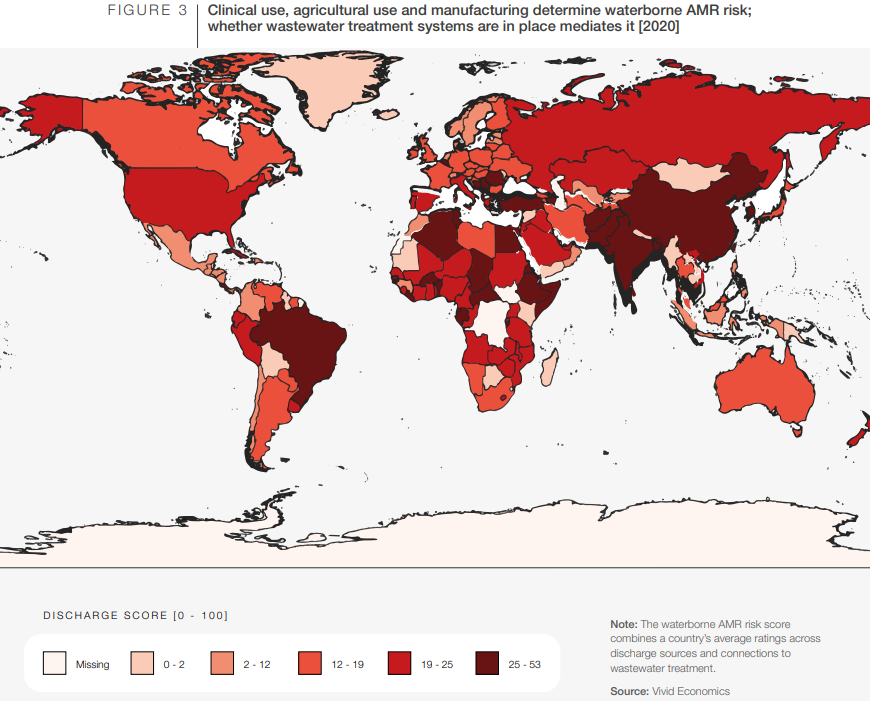
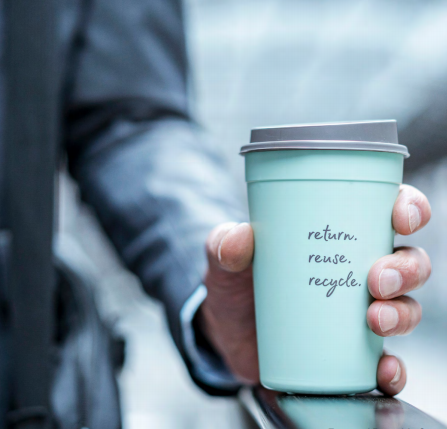
Lynx Global explains; the future of reusable consumption models depends on advancing waste-free adaptations
December 5th, 2021
The 2020 edition of the Living Planet Report – a biodiversity index developed by the Zoological Society of London and the WWF – contains numerous alarming statistics about the troubled relationship between humankind and the ecosystems upon which we ultimately depend. Perhaps none expresses the fundamental imbalance as clearly as this: “To feed and fuel our 21st-century lifestyles, we are overusing the Earth’s biocapacity by at least 56%.”
Among the most tangible signs of this “footprint” upon nature are our ever-growing deposits of refuse, piled upon the land and strewn across the sea. This waste – much of it in the form of nonbiodegrading plastics – represents a pollutant and a threat to wildlife and human species.
But it also represents a failure to derive sufficient value from our own means of production. These durable materials could indeed generate value through multiple uses over a period of months or years. Instead, they enter the economy for a single, brief usage – and then exit it just as quickly. And recycling – even with vastly improved recycling rates – cannot be relied upon to solve the problem.
For consumers, reuse will generate value through a deeper sense of connection with brands, particularly those associated with admired principles of sustainability. In addition, reuse has four business-to consumer models – summarized by the Ellen MacArthur Foundation – with different impacts on consumer needs for convenience: refill at home; refill on the go; return from home; return on the go. Our analysis indicates that at-home models (e.g. cleaning product refills) of reuse can be implemented with relatively little need for significant behaviour change from consumers, while on-the-go models (e.g. returnable beverage cups) will entail greater adjustments to consumption habits.
The private sector will not need to work alone in establishing reuse systems and educating consumers on their value. The public sector can help advance reuse models through third-party collaborations, the establishment of standards, incentives and subsidies, and the development of necessary public infrastructure.
In one scenario, based on proposals from France and the European Parliament, 10–20% of plastic packaging could be reusable by 2030, equating to 50% of annual plastic ocean waste. In two other scenarios, derived from proposals from governments and leading NGOs, systemic change could result in 20–40% or even 40–70% of plastic packaging becoming reusable, depending on the product categories being reused and specific regions that could mainstream reuse. Attainment of any of the three scenarios – especially the third – would mark a significant achievement to provide consumers with viable alternatives to single use.

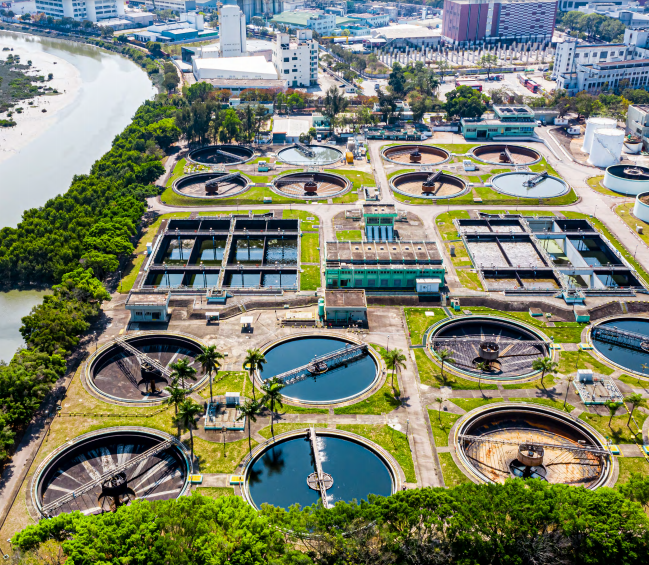
Lynx Global warns; a circular water economy is a must for greener, healthier and more prosperous cities
July 5th, 2021
The challenges that cities face could be mentioned as; urban areas around the globe are becoming less liveable due to water stress, exacerbated by climate change. This needs to change right now.
Over the next three decades, the world’s population living in urban areas is projected to swell to nearly 7 billion people, which will be more than two thirds of all humanity. Yet in this time cities will be less liveable due to climate change, unstable weather patterns and extreme meteorological events.
Cities face a real challenge with increasing water stress, as some are already running out of water. In 2018, Cape Town was poised to become the first major global city to hit “Day Zero”, the day when the taps would be turned off due to drought, high demand and inadequate supply. The metropolis came close. It isn’t alone – Istanbul, Mexico City and Chennai have all faced water crises recently.
One in four cities – representing over $4 trillion in economic activity – are already water stressed.This is also true of 70% of the world’s megacities. If the world continues with business as usual, 45 cities, each with over 3 million residents, will face extremely high-water stress by 2030; and by 2050, the number of urban dwellers facing acute water shortages could climb to over 1 billion.
Water problems are not limited to droughts; the number of extreme rainfall events is also growing due to more energy in the atmosphere. These produce intense precipitation, resulting in increased urban flooding. Extensive cityscapes consisting of concrete, tarmac and buildings create higher flood flows within metropolitan areas. In 2020, Jakarta saw the highest daily rainfall since records began in 1866: floods killed 19 people and 62,000 people were evacuated.
At the same time, cities are becoming hotter. Nine of the planet’s 10 warmest years have taken place since 2005, with the five warmest all occurring since 2015. By 2050, more than 970 cities will experience average summer temperature highs of 35?C. Right now, only 354 cities are this hot. By 2050, heat waves will affect more than 1.6 billion people in urban centres. Towards the end of the century, cities could warm by as much as 4.4?C on average. Builders predominantly construct cities using concrete, which traps this warmth and creates an urban heat island effect, increasing temperatures.
Climate change is exacerbating these impacts, making them more frequent and intense. Adding to this, rapid urbanization is escalating demand for and pressure on city resources. Every month, 5 million people migrate to urban centres around the globe, much of this in the developing world. This means increasing demand for water and energy, as well as more human waste and water pollution. This puts increasing strain on wastewater treatment plants and utilities, and the riverine systems into which water is often discharged.
Water pollution is making waterways sick and deteriorating the environment, potentially having adverse effects on human health. Over 80% of the world’s wastewater is still released into the environment without treatment; roughly 30% in high-income countries; 62% in upper middle-income countries; 72% in lower middle-income nations; and a staggering 92% in low-income countries.

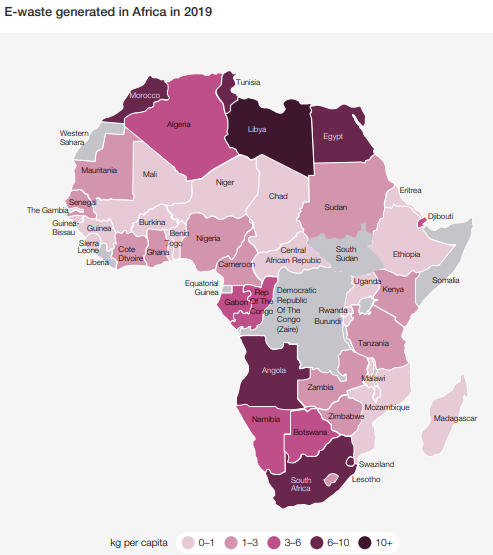
Lynx Global explains; five big bets for the circular economy in Africa
June 5th, 2021
In 2017, the African Circular Economy Alliance (ACEA) was launched with a mission of spurring Africa’s transition to a circular economy (CE) that delivers economic growth, jobs and positive environmental outcomes. The alliance seeks to achieve this through: 1) policy development; 2) leadership and advocacy; and 3) support in scaling CE businesses. The alliance, through the technical committee, governs the implementing organ (the secretariat).
The ACEA was launched with three founding co-chairs of Rwanda, Nigeria and South Africa. In 2019, Ghana and Côte d’Ivoire agreed to join the alliance, bringing the total of countries to five. The charter was signed at the 2019 African Ministerial Conference on the Envionment (AMCEN) in South Africa.
At the same meeting, the African Development Bank (AfDB), with support from the World Economic Forum, announced that it would host its secretariat to support the alliance’s mission more broadly on the continent. Since then, other countries such as Niger, Senegal, Malawi, Cameroon and the Democratic Republic of the Congo have indicated an interest in joining the alliance.
The secretariat commissioned market research on the CE, focused on priority areas in line with the tasks mandated by the charter. This research is anchored on food systems, packaging, the built environment, electronics, and fashion and textiles as areas with a high potential for impact. These areas were prioritized based on their circularity potential but included additional criteria to ensure that prioritized sectors have: economic significance on the continent; the potential for transformative impact; momentum.
There is a unique opportunity to rebuild green and resilient post-COVID-19 economies across the continent. In the face of growing global concerns regarding resource use and economic sustainability, the concept of a circular economy has emerged as an alternative production and consumption model. The circular economy promotes the conservation of finite resources while preserving the environment. It also presents opportunities for economic development, job creation and building new enterprises.
For African countries, circular solutions can be leveraged to attain various climate action obligations and sustainable development goals. This is an opportunity to tackle issues such as poverty, poor infrastructure and unemployment, among others that have hindered economic development.
The COVID-19 pandemic has exacerbated the challenges of poverty, inequality and unemployment facing the African continent. Globally, COVID-19 has affected more than 1.6 billion informal workers and small, medium and micro enterprises, mostly in developing countries, with women being the most affected. The pandemic-induced recession has drained resources and disrupted supply chains, hindering trade in commodities on which African economies rely.
In addition, the effects of climate change have compounded the health and economic impacts of COVID-19. Africa has been hit by extreme weather events, putting a strain on already fragile safety nets and infrastructure. Countries now spend between 2% and 9% of their GDP in response to climate-related events such as floods, droughts and landslides. There is a unique opportunity to rebuild green and resilient post-COVID-19 economies across the continent. Putting in place the right circular economy initiatives and policies will support the recovery and trigger new market opportunities.
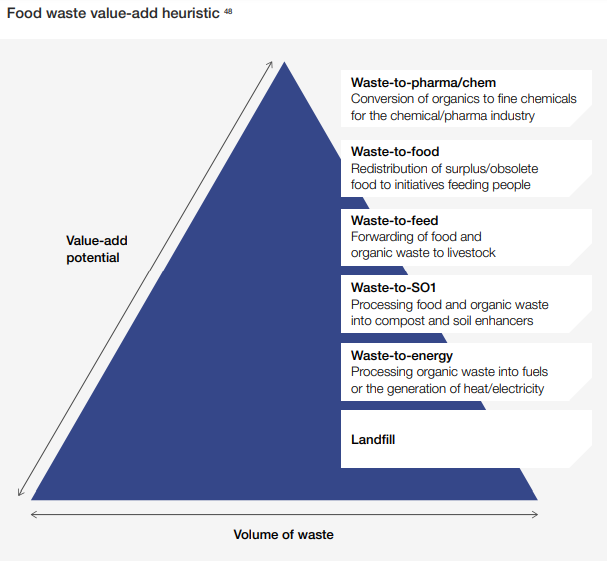
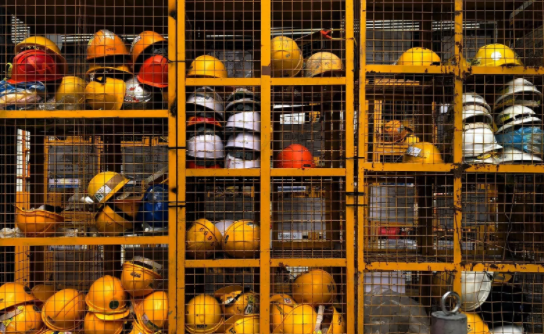
Lynx Global asks; have we fulfilled the promise of International Workers' Day?
May 5th, 2021
International Workers’ Day, or ‘May Day,’ will be observed on Saturday 1 May. Some countries have managed to significantly strengthen workers’ rights since observance began in the 19th century. Still, much remains to be done to improve conditions for the global workforce.
Earlier this week, US President Joe Biden unveiled a plan to promote worker organizing: a notable effort in a country where membership tumbled to 10.8% of the workforce by 2020 from 20.1% as recently as 1983. The move came at an appropriate time, just a few days ahead of what will be observed around the world as International Workers' Day.
Around the world, that is, but not in the US – which long ago slotted its Labor Day in September and sought during the Cold War to re-brand May Day, deemed to have communist overtones, as “Law Day.” Still, the White House initiative, designed to foster a more inclusive middle class, marks a move in the direction of strengthening workers’ rights.
International Workers’ Day originated in the 19th century as a way to honour efforts to win an eight-hour workday, at a time when factory labourers in industrializing countries would regularly clock 70 hours or more per week, and conditions were frequently abysmal. Since then, Germany has cut its annual working hours by an estimated 60%, while the UK has seen a roughly 40% reduction.
In addition, in many countries child labour has diminished (children were once prized by factory owners in the US for being cheaper and less likely to strike), and the circumstances for workers in general have vastly improved.
In Sweden, parents can now share 480 days of paid parental leave, while in Austria, at least one out of every 25 jobs must be filled by disabled workers, and Germany plans to increase its national minimum wage to €10.45 ($12.65) per hour by next year. In Denmark, employers aren’t legally allowed to prevent employees from joining a .
The ratio of workers in Europe who are members tends to be higher in Scandinavian countries, and lower in central and eastern states where s may have been mostly used for political purposes before the fall of the Berlin Wall – an era when 1 May celebrations were often compulsory.
There are questions about traditional models and whether they make sense for modern “knowledge workers.” Increasingly prevalent gig work can undermine collective bargaining, and some have suggested the eight-hour-day fought for long ago may no longer even be relevant. Frequently, workers have been aggressively deterred from making any initial progress on izing at all.
A high-profile drive at an Amazon warehouse recently ended with employees voting against the effort, and the company’s founder Jeff Bezos subsequently vowed to “do a better job” for its workers.
In China, where a “long-hours culture” has spread from factory workers to white-collar employees, some have started to publicly propose that the idea of an eight-hour workday might still be relevant in the 21st century, after all.
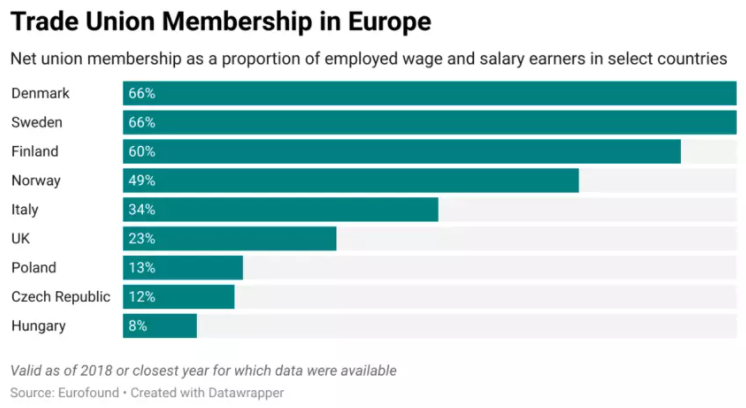

Lynx Global warns; a leapfrog moment for China on ESG (Environmental Social Governance) reporting is released
April 5th, 2021
Driving one of the world’s largest and most dynamic economies, China’s enterprises have a leading role to play in delivering environmentally friendly and socially responsible prosperity, both domestically and around the world. Quality reporting of corporate environmental, social and governance (ESG) metrics can guide capital flows, help regulators make timely policy decisions and enable customers to make informed supply chain management decisions that foster sustainable growth.
China’s ambition to reach peak carbon before 2030 and achieve carbon neutrality by 2060 will require companies to act now to transform, to various extents, to a lower-carbon business model. ESG reporting, including making emissions data visible and comparable, is a key ingredient in this transition.
We understand the need to broaden the base of business leaders committed to advancing the sophistication and application of ESG reporting standards and believe that China will play an important role in this process. This is why the China Action Group, a community of Chinese CEOs and chairpersons who are engaged in the activities of the World Economic Forum, asked the Forum to explore the state of ESG understanding, thinking and application in China. This report provides an important stocktake, highlighting promising opportunities and the remaining challenges.
Business leaders everywhere understand the importance of measuring corporate performance not merely in the form of financial statements but equally by examining and reporting on environmental, social and governance (ESG) metrics. The COVID-19 pandemic has highlighted the central role businesses play in building up more prosperous, fulfilled societies and a more sustainable relationship with our planet.
"Thoughtful and sophisticated metrics help businesses measure and demonstrate their contributions. We therefore applaud the work that the World Economic Forum has facilitated globally on advancing common metrics and consistent reporting of sustainable value producing. As Chinese business leaders, we are aligned with the global effort put forward by the Forum."expression was reported with excitement.
China has been leading the economic rebuilding needed as a result of COVID-19, and the impact of decisions and the strategic direction taken by its business leaders will be felt not only domestically but also globally. Policy-makers, regulators, investors and other stakeholders will increasingly demand that corporates disclose their non-financial performance and footprint.
China’s commitment to become carbon neutral by 2060 will only accelerate these dynamics. During the Forum-led discussions, participants highlighted, however, that business leaders should further develop the Chinese ESG ecosystem beyond stakeholder expectations or regulatory requirements. They saw an opportunity for a leapfrog moment for ESG value creation and reporting in China.


Lynx Global explains; why recovery today and resiliency tomorrow require global, multistakeholder cooperation
March 5th, 2021
While the benefits of cooperation are evident, the idea of working towards a shared future has faced challenges in recent years. The COVID-19 pandemic infected a divided world – one with pre-existing geopolitical fault lines and with growing distrust of globalization.
Mechanisms for multilateral action were under strain at the very moment the unfolding pandemic and economic contraction demanded strengthened partnership.
The effects of the pandemic should serve as a catalyst for changing course – away from competition and towards cooperation. Making progress on immediate priorities, including developing and distributing COVID-19 vaccines and effecting economic and societal recoveries, all while taking more ambitious action on long-standing challenges such as climate change and inequity, requires purposeful, coordinated effort.
Greater resilience can only occur if leaders rebuild or reimagine instruments for greater collaboration. The world has seen the benefit that global coordination can bring. The decline in poverty, the growth in innovation and the swift response to security threats over the past three decades could not have been realized without efforts being aligned.
Still, the path ahead does not mean just replicating the steps that showed promise in the past. For global cooperation to be restored, it needs to be reset.
A framework for cooperation and the attendant mechanisms for advancing economic, environmental, security and technology priorities must be configured for today’s dynamic reality. International institutions need to adapt and stakeholders need to account for new actors and technologies that bring novel challenges. Though existing structures and instruments may not be sufficient to respond to the challenges, discarding them would be misguided. Stakeholders should make practical use of current mechanisms, strengthening them as appropriate, while identifying new approaches for progressing in common purpose.
Within the current period of uncertainty, drawing a road map towards greater cooperation presents a risk that a fixed path can quickly become misaligned to the geopolitical landscape. Instead, leaders should commit to a common set of principles that can serve as a compass, pointing to the desired destination despite the turbulent environment and differences in starting points. Articulating areas of agreement is therefore the first step towards ambitious collective action.

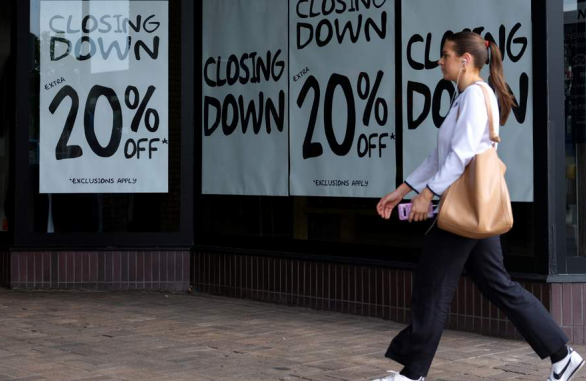
Lynx Global warns; businesses risk a disorderly shakeout which can exclude large cohorts of workers and companies from the markets of the future
February 5th, 2021
Global Risks Report analyses the risks from societal fractures—manifested through persistent and emerging risks to human health, rising unemployment, widening digital divides, youth disillusionment, and geopolitical fragmentation. Businesses risk a disorderly shakeout which can exclude large cohorts of workers and companies from the markets of the future. Environmental degradation—still an existential threat to humanity—risks intersecting with societal fractures to bring about severe consequences.
Yet, with the world more attuned to risk, lessons can be drawn to strengthen response and resilience. In 2020, the risk of a pandemic became reality. As governments, businesses, and societies grapple with COVID-19, societal cohesion is more important than ever. The immediate human and economic cost of COVID-19 is severe. It threatens to scale back years of progress on reducing poverty and inequality and to further weaken social cohesion and global cooperation.
Job losses, a widening digital divide, disrupted social interactions, and abrupt shifts in markets could lead to dire consequences and lost opportunities for large parts of the global population. The ramifications—in the form of social unrest, political fragmentation and geopolitical tensions—will shape the effectiveness of our responses to the other key threats of the next decade: cyberattacks, weapons of mass destruction and, most notably, climate change.
Among the highest likelihood risks of the next ten years are extreme weather, climate action failure and human-led environmental damage; as well as digital power concentration, digital inequality and cybersecurity failure.
To mention about the highest impact risks of the next decade, infectious diseases are in the top spot, followed by climate action failure and other environmental risks; as well as weapons of mass destruction, livelihood crises, debt crises and IT infrastructure breakdown.
When it comes to the time-horizon within which these risks will become a critical threat to the world, the most imminent threats – those that are most likely in the next two years – include employment and livelihood crises, widespread youth disillusionment, digital inequality, economic stagnation, human-made environmental damage, erosion of societal cohesion, and terrorist attacks.
Economic risks feature prominently in the 3-5 year timeframe, including asset bubbles, price instability, commodity shocks and debt crises; followed by geopolitical risks, including interstate relations and conflict, and resource geopolitization. In the 5-10 year horizon, environmental risks such as biodiversity loss, natural resource crises and climate action failure dominate; alongside weapons of mass destruction, adverse effects of technology and collapse of states or multilateral institutions.


"Countries with advanced digital skills and safety nets doing better in pandemic", says Lynx Global
January 5th, 2021
In this year’s Global Competitiveness Report, it was measured that the ability of countries to weather and recover from the devastation caused by the coronavirus pandemic.
Because of the pandemic and the inability to collect necessary data, country rankings in the report have been suspended. Instead, it examines the factors that help economies better manage and recover from the pandemic.
The report notes the deep economic recession triggered by the infection continues to have profound economic and social consequences. While no country has emerged unscathed, some are more resilient than others.
Countries that have a greater level of digitization across their economies and that have been able to switch relatively rapidly to remote work, those happen to be the countries that fared slightly better and in particular their populations, because of being able to maintain their jobs, fared slightly better.
Netherlands, New Zealand, Switzerland, Estonia and the United States as countries that have performed well on this measure. Authors of the report find countries with strong social safety nets and robust health care systems also have managed to withstand the worst effects of the pandemic.
A number of international institutions advise governments to use stimulus packages to support their economies and workers during this difficult period. At the same time, she says governments should start moving to a slightly more dynamic phase in preparing for the post-pandemic period.
That does not mean that governments will not need to continue to do some investment, they have to continue to provide some support. It may not be short-term furlough schemes, but it may instead be longer term support for safety nets that allow workers to move out of their current roles to get some income support, to be able to retrain, to reskill and then move on to another future role.
Recovery from the coronavirus for lower income or highly indebted countries will be more difficult than for the advanced economies. An international collaboration agreement is immediately needed to support these countries in the short term so they can move forward.
These countries will need support from the international community for some time to recover from the ruinous impact upon their economies by COVID-19, the illness triggered by the coronavirus.
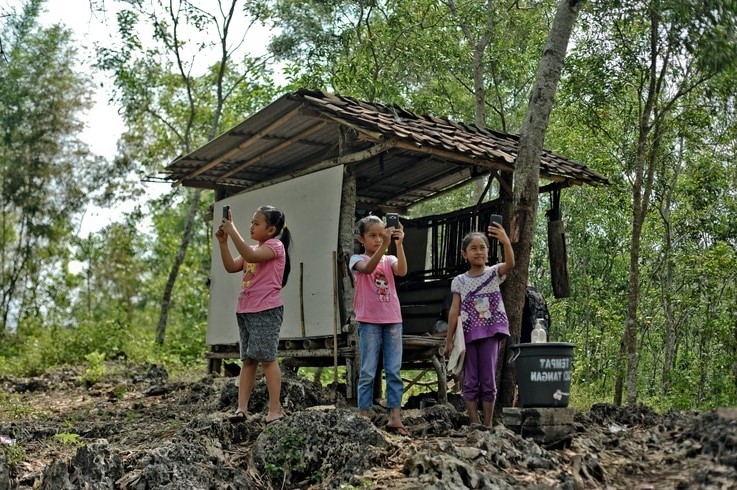

Lynx Global warns; 2021 will set off an avalanche of business insolvencies
December 5th, 2020
* A business insolvency is when a company is no longer able to pay debts or bills.
* It's predicted that 2021 could bring an avalanche of business insolvencies as the effects of lockdowns on businesses take hold.
* In the United States, business insolvencies are predicted to rise by 57% as a result of Covid-19.
According to a report by insurer Euler Hermes, the effects of the Covid-19 pandemic will be felt most severely in 2021 when it comes to business insolvencies. The number of insolvencies will rise sharpest in the USA (up to 57% more compared with 2019), Brazil and the UK.
China is also expected to be hit hard. Since many countries stopped requiring businesses which are insolvent to file for insolvency during the pandemic, the real cost to businesses will only unfold much later. Insolvencies are expected to actually fall as a result of these regulations in 2020 and pile on in 2021.
Less of a burden is expected to be felt in Germany, where insolvencies are expected to be up by 12% in the coming year. Ron van het Hof, CEO of Euler Hermes in Germany, Austria and Switzerland, expects that the calm before the insolvencies storm will be over in the third quarter of 2020.
"This time bomb will go off in the third quarter of the year at the latest and the shock waves are likely to spread into the entire first half of 2021", van het Hof said.
Developed economies in East Asia, for example Japan and South Korea, will experience significantly fewer insolvencies as they avoided large scale and prolonged shutdowns. India, which is now the second hardest-hit country in the pandemic, is expected to also get off quite lightly.
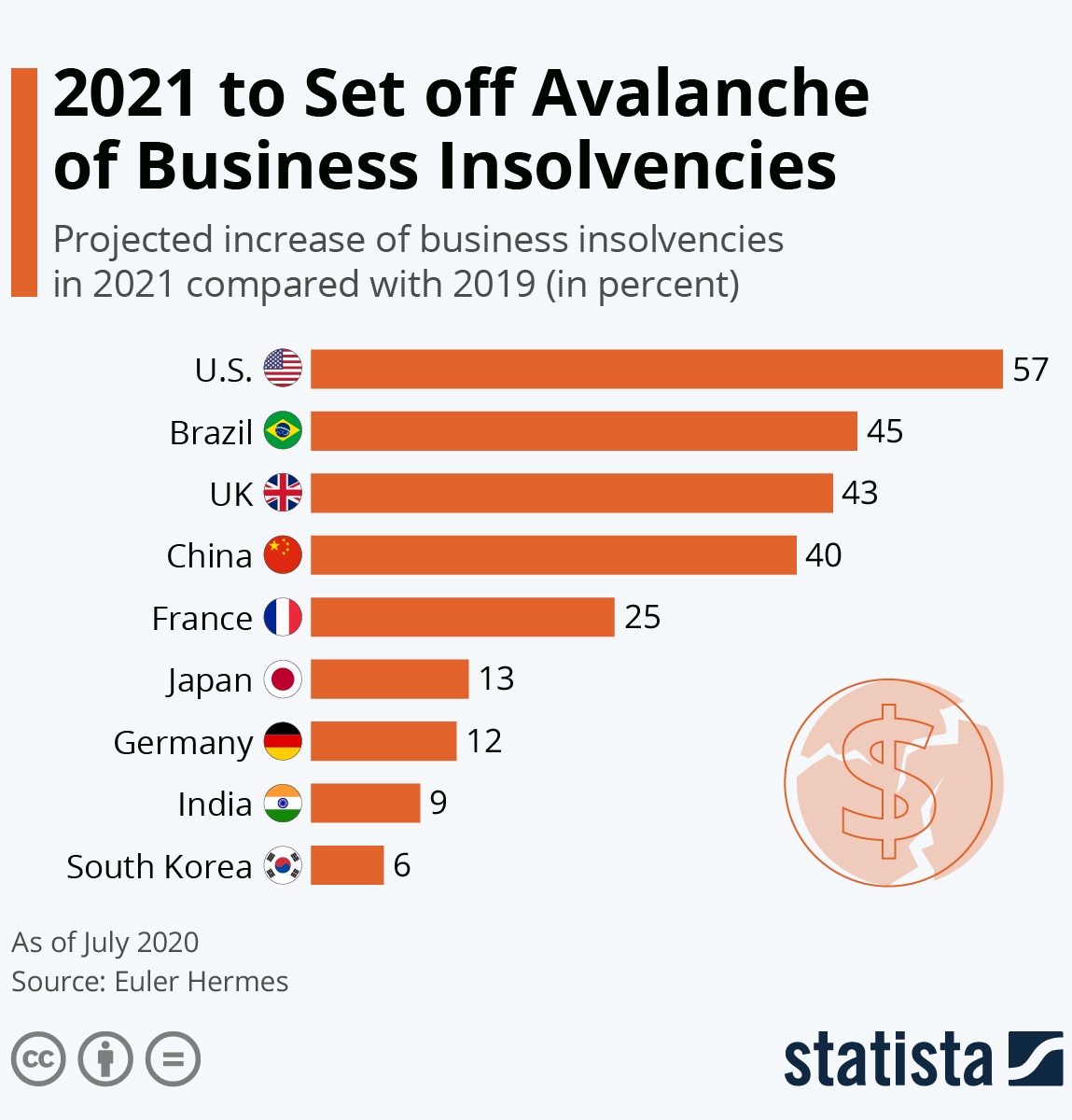

Lynx Global explains; why skills - not degrees - will shape the future of work
November 5th, 2020
* The nature of work and careers is changing fast - and in the future, the right skills will be prized over academic qualifications alone.
* The Covid-19 slowdown offers employers an opportunity to reshape their hiring practices around this shifting paradigm.
* How well companies can change their mindset will help define their future performance.
For generations, we have spent the first third of our lives acquiring the college degrees we need to find jobs. These degrees are the stamps on our professional passports that paved the way for the remaining two-thirds of our journey.
This implies that the nature of our work, along with the skills and knowledge required to execute it, remains unchanged for a lifetime – which of course is no longer true. While our parents likely held one job for life, most of us have had several – and not just jobs but careers, too.
Our children can expect to have many jobs and careers through their professional lives – perhaps even at the same time, with the maturing of the gig economy.
Clearly, the future of work will not be about college degrees; it will be about job skills. Now is our opportunity to steer those without college degrees toward successful careers and increase diversity amongst our workforce.
According to the World Economic Forum, more than 1 billion jobs, almost one-third of all jobs worldwide, are likely to be transformed by technology in the next decade. We are already seeing this happen. Think of the service staff at your favourite restaurant taking your order on a tablet that is connected to a central order-processing system back in the kitchen. The tablet must work without glitches to keep the restaurant running smoothly.
Think of the apps you use to shop, track orders and simply stay informed. The store needs to keep them up and running at all hours, day after day, all year round. And because every one of these stores collects and maintains customer data that they study for trends – they need data analysts. They must also secure this data, which means they must therefore run cybersecurity operations.

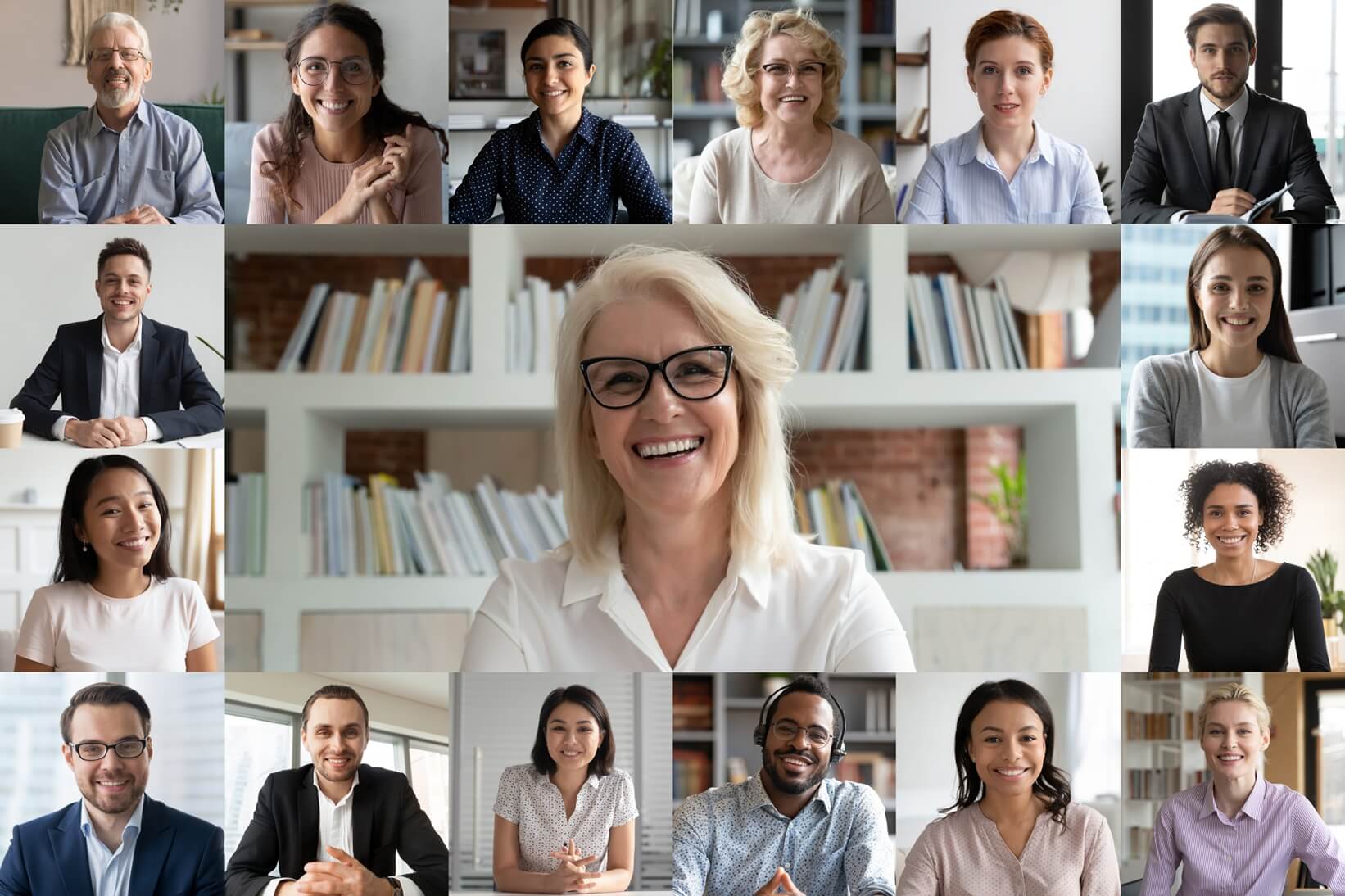
"This is how the global economy will recover from Covid-19, according to CEOs", says Lynx Global
October 5th, 2020
* Economic recovery usually takes on 1 of 5 distinct shapes, either L, U, W, V and sometimes Z.
* From over 600 CEOs surveyed by The Conference Board, 42% predicted the recovery will follow a U-shaped recovery.
* However, these responses still varied dramatically by region, with only 26% of Japanese CEO's supporting this assumption.
The Shape of Economic Recovery, According to CEOs: Is the glass half full, or half empty?
Whenever the economy is put through the ringer, levels of optimism and pessimism about its potential recovery can vary greatly. This current state mid-pandemic is no exception either. This graphic structure first details the various shapes that economic recovery can take, and what they mean. We then dive into which of the four scenarios are perceived the most likely to occur, based on predictions made by CEOs from around the world.
The ABCs of Economic Recovery: Economic recovery comes in four distinct shapes—L, U, W, and V. Here’s what each of these are characterized by, and how long they typically last.
L-shape: This scenario exhibits a sharp decline in the economy, followed by a slow recovery period. It’s often punctuated by persistent unemployment, taking several years to recoup back to previous levels.
U-shape: Also referred to as the “Nike Swoosh” recovery, in this scenario the economy stagnates for a few quarters and up to two years, before experiencing a relatively healthy rise back to its previous peak.
W-shape: This scenario offers a tempting promise of recovery, dips back into a sharp decline, and then finally enters the full recovery period of up to two years. This is also known as a “double-dip recession“, similar to what was seen in the early 1980s.
V-shape: In this best-case scenario, the sharp decline in the economy is quickly and immediately followed by a rapid recovery back to its previous peak in less than a year, bolstered especially by economic measures and strong consumer spending.
Z-shape: Another scenario not covered here is the Z-shape, defined by a boom after pent-up demand. However, it doesn’t quite make the cut for the present pandemic situation, as it’s considered even more optimistic than a V-shaped recovery.
How CEOs Think The Economy Could Recover
The think tank The Conference Board surveyed over 600 CEOs worldwide, to uncover how they feel about the likelihood of each recovery shape playing out in the near future.
The average of CEOs felt that economic recovery will follow a U-shaped trajectory (42%), eventually exhibiting a slow recovery coming out of Q3 of 2020—a moderately optimistic view.
However, geography seems to play a part in these CEO estimates of how rapidly things might revert back to “normal”. Over half of European CEOs (55%) project a U-shaped recovery, which is significantly higher than the global average. This could be because recent Covid-19 hotspots have mostly shifted to other areas outside of the continent, such as the U.S., India, and Brazil.
Here’s how responses vary by region:
In the U.S. and Japan, 23% of CEOs expect a second contraction to occur, meaning that economic activity could undergo a W-shape recovery. Both countries have experienced quite the hit, but there are stark differences in their resultant unemployment rates—15% at its peak in the U.S., but a mere 2.6% in Japan.
In China, 21% of CEOs—or one in five—anticipate a quick, V-shaped recovery. This is the most optimistic outlook of any region, and with good reason. Although economic growth contracted by 6.8% in the first quarter, China has bounced back to a 3.2% growth rate in the second quarter.
Finally, Gulf Region CEOs feel the most pessimistic about potential economic recovery. In the face of an oil shock, 57% predict the economy will see an L-shaped recovery that could result in depression-style stagnation in years to come.
The Economic Recovery, According to Risk Analysts
At the end of the day, CEO opinions are all over the map on the potential shape of the economic recovery—and this variance likely stems from geography, cultural biases, and of course the status of their own individual countries and industries.
Despite this, portions of all cohorts saw some possibility of an extended and drawn-out recovery. Earlier in the year, risk analysts surveyed by the World Economic Forum had similar thoughts, projecting a prolonged recession as the top risk of the post-Covid fallout.
It remains to be seen whether this will ultimately indeed be the trajectory we’re in store for.
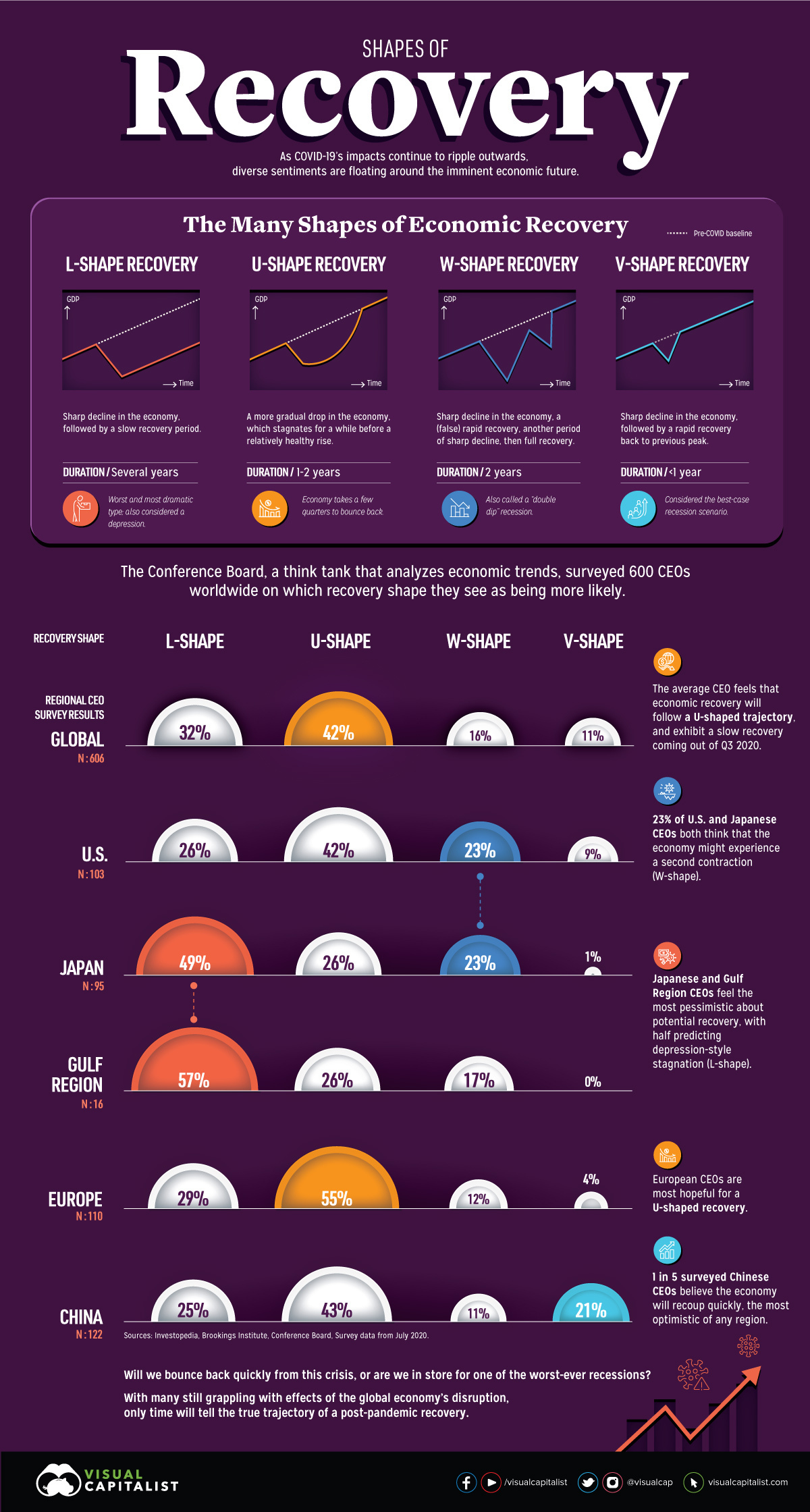
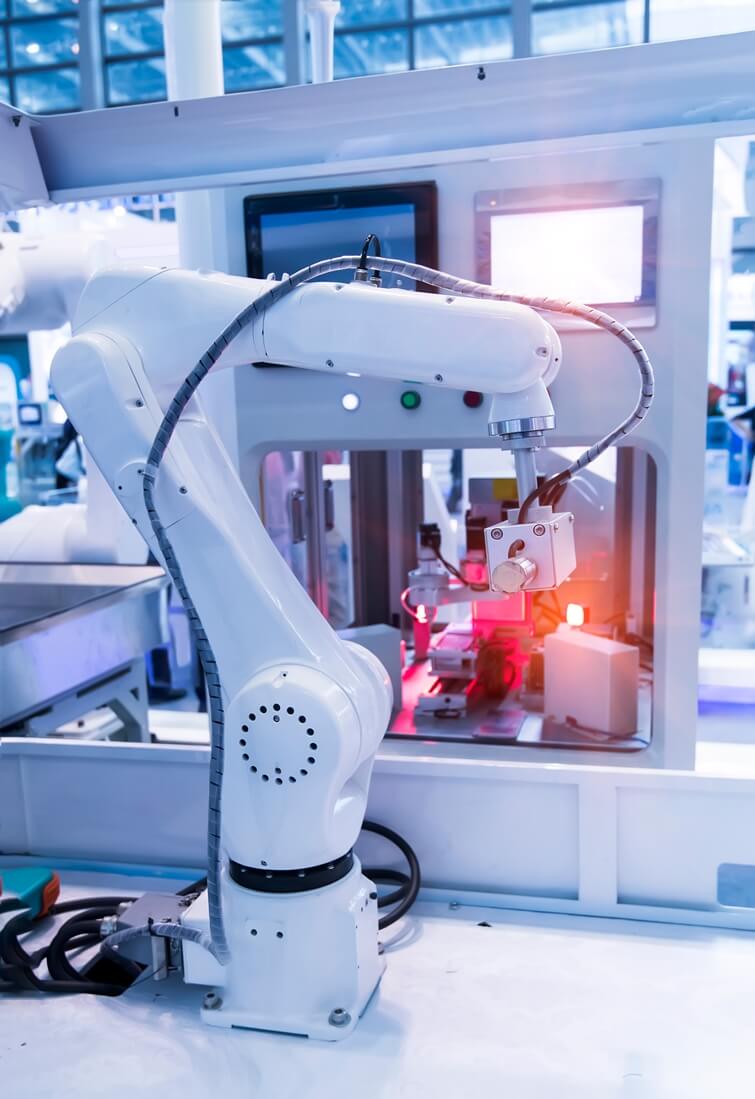
Lynx Global explains; why insured resilience - not technology - is the answer to our biggest challenges
September 5th, 2020
* The Fourth Industrial Revolution can't be a panacea for the problems caused by our obsession with unchecked economic growth.
* We need instead a concerted effort to reset our economic systems and make some hard choices about our future paths.
* An approach we call "Insured Resilience" could be the answer we need. Here's a guide.
Over the past couple of decades, the world has become enamoured with the transformative power of technology, and the belief that it can be the panacea for all human challenges.
The Covid-19 pandemic has upended this narrative, however. In spite of all the hype, digital technology could not prevent nor control the spread of the coronavirus. Instead, sound policy interventions, accessible healthcare, devoted professionals and good common sense are what have flattened curves. The technology that controlled the infection wasn’t a fancy contact tracing app, but instead the simple face mask.
The tech scene has been buzzing for a few years about the Fourth Industrial Revolution, a supposed technological transformation characterised by big data, artificial intelligence and automation.
But the last thing the world needs is another "revolution" that ignores the external cost to society of our unchecked obsession with economic growth at all cost. Technology won’t solve the climate crisis, prevent the recurring wildfires in the US, heal social divides or resolve social inequality. Only a concerted effort to reset our economic systems and a willingness to make hard choices about priorities will do that.
The world needs a different "IR" – something we call "Insured Resilience". The word "Insured" means to secure or protect someone against a possible contingency; in this case, the economic, social and climatic trends we face in the 21st century, particularly those arising from unsustainable resource overexploitation, the crisis of consumption-led capitalism, biodiversity losses, and climate change.
"Resilience", in contrast, denotes society’s ability to withstand and recover from these shocks when they occur. Together, Insured Resilience frames a society designed to both prevent and protect against crisis, and to recover quickly from damage.
What should our priorities be?
Safety and security are the basis of insured resilience 1.0: an approach to human progress that insures society against shocks in order to build safe and secure communities. This is not a stockpile of goods or a reserve of funds, but rather an economic restructuring so that everyone’s basic needs are met, natural systems are preserved, and social safety nets are established. Insured resilience means that a country must be able to provide for itself in times of need, such as when global supply chains are disrupted. The pandemic has shown that those at the bottom-of-the-pyramid are often disproportionately affected by shocks. Governments need to step in with economic policies to ensure that common public goods, like healthcare, housing, education, food, water and energy, are provided equitably. Some rights cannot be left to market forces. Then, there are the external impacts directly caused by technological development. In places with persistently high rates of unemployment and underemployment, automation and artificial intelligence cannot be allowed to be endlessly "disruptive". Governments need to offer people proper alternatives and opportunities to reskill and upskill. And if governments are willing to give tax breaks to the rich to spur investments and spending, then why can’t they tax robots to manage employment? We should not see technological advancement and human progress as the same thing; after all, billions of people in many parts of the world still lack stable electricity, clean water, and homes with sanitary toilets. For example, the pandemic has shown us that good sanitation and waste-treatment systems should be implemented in both urban and rural areas as a top priority.
In recent years, the consequences of our assault on the biosphere have become clear: from the spread of zoonotic diseases and locust outbreaks to permanent damage to riverways and fertile soil. The overuse of chemicals, deforestation, climate change and other human factors has led to the loss of one-third of all arable land over the past 40 years. Food security is of utmost importance in an increasingly crowded world. A vibrant rural economy must be maintained to prevent people from leaving the countryside in search of better jobs in the city. China knows this lesson better than any other nation in the world, as shown by their recent campaign to tackle food waste, which will have a significant effect on how it grows, processes and consumes food. But insured resilience needs more than just government efforts. All stakeholders need to be concerned with collective welfare. Societies where people take it upon themselves to protect each other from harm fare better than those with a more individualistic culture: compare outcomes in Hong Kong, Viet Nam and South Korea with the United Kingdom and the United States. Technology doesn’t create a stable society with rules, norms and values. Instead, such a society is the product of social contracts built between the different pillars of society, such as the government, the private sector, civil society and ordinary citizens. In these societies, there is an acute understanding of when and how to best put collective welfare ahead of individual rights.
To support collective welfare, society must protect the commons – the air, the fisheries, forests, rivers and all other natural resources — for future generations, and insure the world against natural shocks like climate change and pandemics. Insured resilience is not a rejection of new technologies. Many of the technologies of the Fourth Industrial Revolution could be used to revitalise ecologies, protect the commons, and sustain livelihoods. For example, drones could be used to help farmers dramatically reduce the use of chemicals like fertiliser; education technologies could be used to facilitate skilling; and sensors used in the Internet of Things can help to monitor carbon emissions and ensure consumers pay for their externalities, such as excessive air conditioning and water usage. The pandemic should teach us that when it comes to preventing a global crisis, we can’t wait for a revolutionary technology to come save the day. Instead, countries need a development approach that integrates resilience into their economic planning and protects communities from external shocks, helping them recover from disaster better than before: insured resilience.
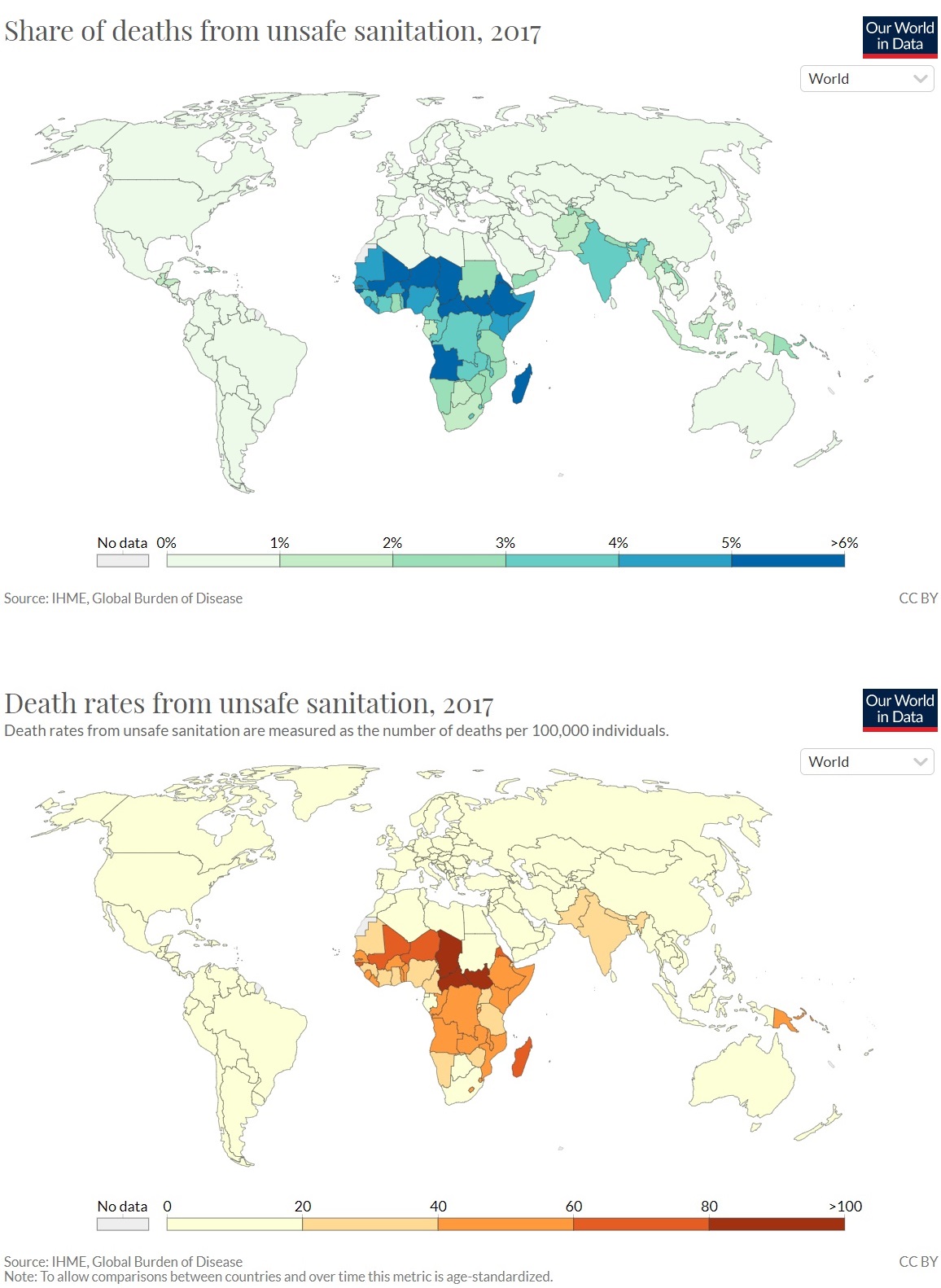

"Covid-19 teaches all companies invaluable lessons on workplace leadership", says Lynx Global
August 5th, 2020
8 Leadership Lessons Taught By Covid-19:
1. Accepting That Remote Working Is A New Reality: Companies that already have work from home policy in hand are doing fine. But, it took a pandemic for many to understand the benefits of a work from home policy. Coronavirus results in an increasing number of employees working from home. As a result, many employers have found themselves in an unfamiliar situation. They are trying hard to adapt and adjust to a new way of working. But, they have already accepted the fact that remote working is real. And it’s big. Transformation is the real test of leadership. Many employers have come forward to overcome the challenges put by the crisis. They have learned to address the situation in the first place. They have dived deep into the concept of remote working, and the challenges involved. They have developed policies for employees situated in different locations. Currently, remote working tools are also being highly used. Thus, it has inspired great leaders to make the remote workplace efficient.
2. Prioritizing Personal Safety Of Employees: Employers all over the world now agree that health and safety issues are the top priorities. For example, IBM has taken a totally new approach. The company has adopted new travel restrictions for the safety of its employees. They have closed domestic travels for internal meetings and participation in external events. They have allowed domestic travel, but not to the restricted locations. Otherwise, employees have to self-quarantine for 14 days. In the process, they have already proved to be good role models for many. Thus, business leaders have understood their priorities now. They have also displayed them in many easy ways. They are also sharing safety health tips with their employees regularly. It is basic that every employer can do the same to stop the virus from spreading even further.
3. Understanding That Digital Is No More Critical: For the past years, several organizations have failed to move ahead. Covid-19 pandemic is driving the rapid adoption of digital technologies across companies. It has become the most important strategy to stay relevant. Real-time remote actions have replaced manual performances. Thus digital is no longer critical. Leaders who considered "going digital" to be someone else’s job now believe the same to be the only hope.
5. Dividing Authority: Fighting through complexities, employers now feel employees should be proactive and make decisions. They should not always wait for directions from the superiors. It requires fast, and transparent communication from the employers’ end. During this crucial period, as a leader, even if you don't have all the answers, you should communicate freely and do your best to close the gap between what's going on at the top and how it can impact the organizational future. In the process, they have to give some more authority to their employees than usual. By showing trust in them, many leaders have already achieved clappings.
6. Getting More Confident In Leadership Skills: "Showing confidence is leadership’s number one job in a crisis", says Michelle Batt, Lead with CX. After tackling the pandemic for months now, employers have started to respond. By far, they are quite positive about it. They know that the situation is not going to be easy very soon. But they can get through it all together. It brings a new light of hope among the employees too.
7. Understanding The Power Of Joint Efforts: During this crisis the leaders of the best workplaces have recognized the power of joint efforts. No matter how strong they were in self-decision making, they now need the support of all their employees. They expect the full dedication of their team towards shared objectives.
8. Keeping The Personal Goals Aside: Most leaders often keep going over strategies about how they are more likely to get a promotion. They now have realized that there is a lot beyond the fancy titles and attractive perks. They now look into broader, deeper, and longer-term concerns while knowing that less fortunate employees in their teams are worried about even keeping their jobs. They are now deeply empathetic to the challenges of the people in their teams. In the process, leaders create a unique opportunity for themselves to become the leader as others want to have. These leadership lessons are going to go a long way in all businesses. Do you have anything else to share in this regard?

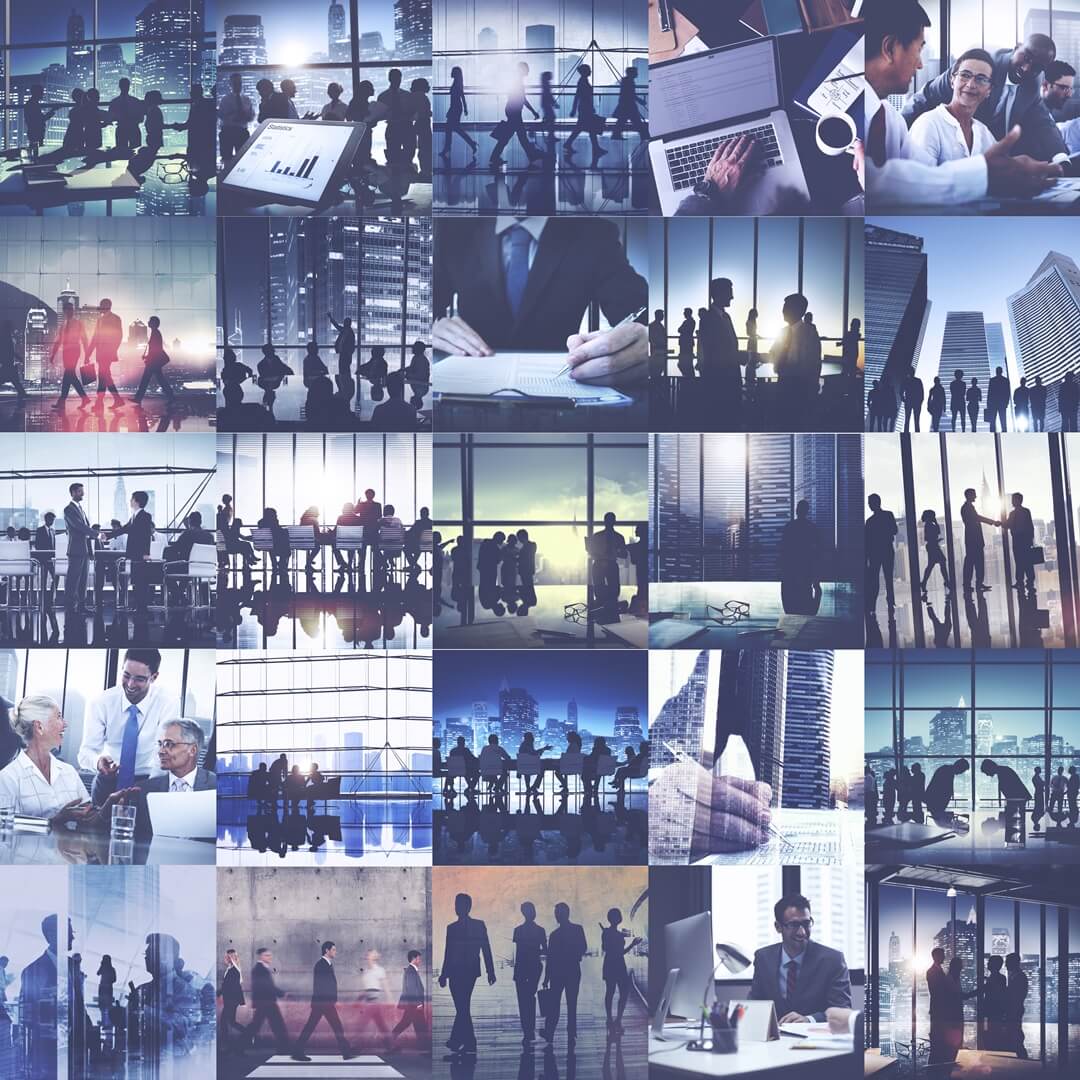
Lynx Global warns; act now to expand your business to intercontinental level
July 5th, 2020
Business development; which its essential core is domestic and international marketing and sales operations, is a specialist discipline and indeed few businesses have the related necessary trainings, skills and experience in-house on the contrary to popular belief. It can sometimes take a challenge to bring out the best in us. Where some larger businesses may be slower to change their ways, there is an opportunity for independents and small groups to embrace the challenges, work smarter and compose new competitive advantages. Sincerely, the best way for your company would be to have professional help for all; as considering we’re already here to provide the needed support for you with all related aspects & details asap. On the other hand, we always keep in mind that; export, for the welfare and peace stability of people, companies and countries; is “absolutely necessary” on the way to achieve a sustainable and healthy economical growth and development. Our common focus with all our supplier partners is, export.
It would certainly be a vital mistake; just to sit and wait for new customers, as if they will themselves begin to search and find your company and accept as their new supplier partner themselves, as if they will themselves declare you that your products and services are qualified and their price levels are competitive and as if they will themselves ask you for a long-term and reliable partnership in the market; as well as; to keep doing nothing till some competitors show up in the market with aggressive price levels and flexibilities and begin to take over your business areas step by step. To be able to enter the minds of new customers as a competitive and qualified supplier partner, as the first step; you have to make sure that your supply chain is a competitive and qualified one with its all purchasing and procurement operations to ensure you are supplying the right products and services from the right suplliers with the right prices. Afterwards; in addition to a detailed and comprehensive market research study for the products and services that your company is the manufacturer of, we are preparing a “Plan For Business Development By Export” in a proactive and realistic strategy line.
Then, we identify potential customers, importers, distributors, wholesalers, retailers, applicators, users and all buyers in other formats; reach them and begin marketing and selling operations of your products and services actually. As Lynx Global, within the scope of the plan for business development by export; for your products and services which have export potential and for your company, compared to the domestic and foreign competitors; we clarify; the advantageous aspects of the target markets, target customers, marketing and sales tactics, strategies to enter different geographies, possible distribution channels and their facilities and conditions and many other important factors; in addition to that; we also form the marketing and international pricing strategies based on our cost, profit, price and value analyses of your products and service and we plan and execute the whole process in a detailed, transparent and integrated manner.
While choosing the target market within the scope of the plan for business development by export study, we conduct a comprehensive and meticulous market research on a sector-basis structure. During realizing the market research, we analyze the following items in detail; demographic, social, economic and political structures, geographical locations of the target markets and industrial structure of the relevant sector in that geography (the production and consumption amounts of the subject products and services in the target export market and the number, qualifications, scales, competitiveness, capacities, competencies. etc. of the competing companies), besides the technological development level, the usage status of the subject products and services produced with this technology in related sectors and of course the needs and expectations of target customers of all scales and many other important details.
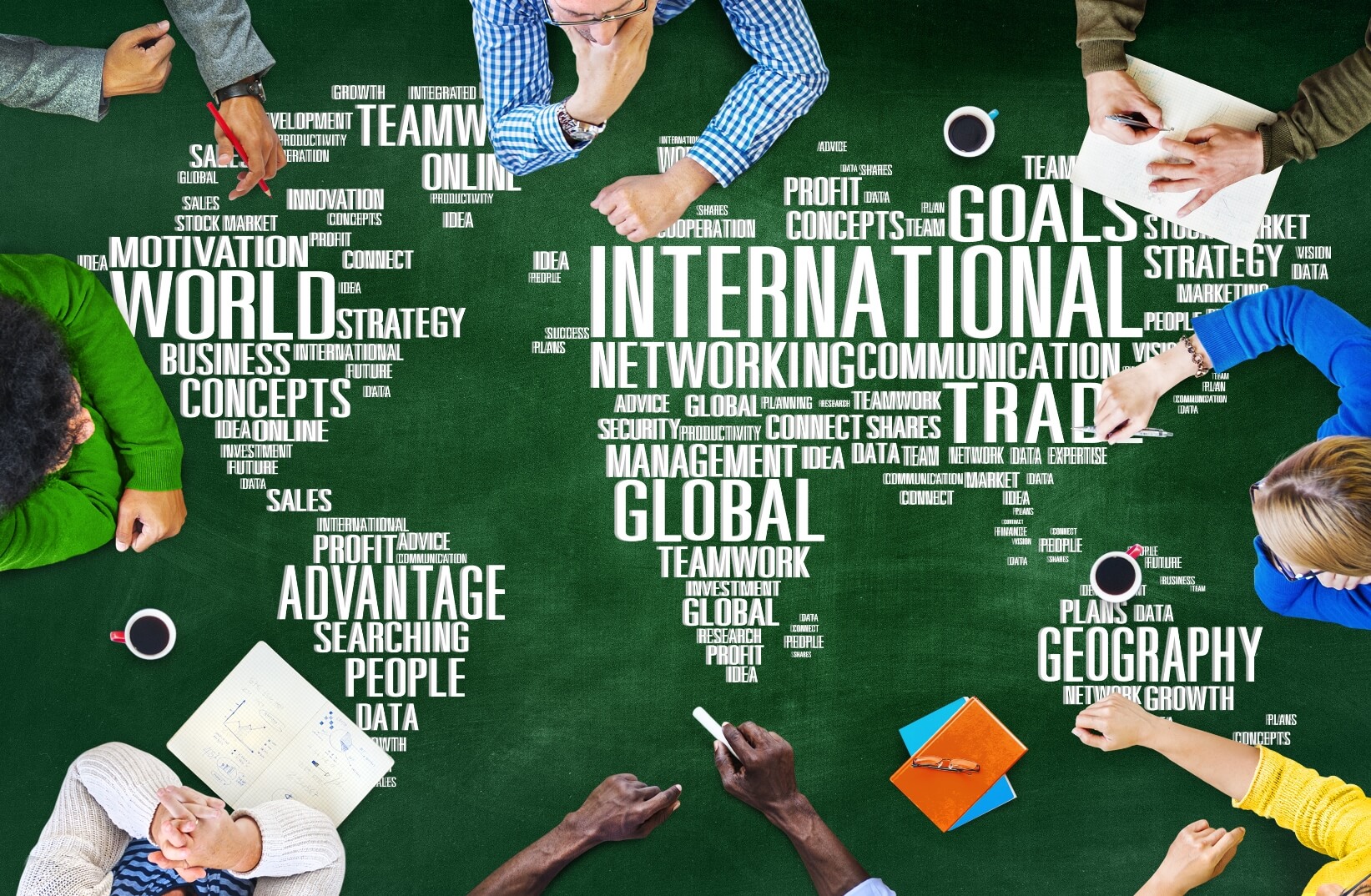

For every single company; no matter what the industry or geography it operates its business in; to be able to maintain the costs and profits in a stable manner besides boosting the business by export with the aimed conditions in target regions; a proper support from a worthy professional group is a must for the successfull business development with its all related marketing and sales operations. Besides; ensuring the quality, availability, competitiveness and flexibility in total at your business development and its related marketing and sales operations will make a real difference against the competitors of your company and will provide a considerable amount of increase at your margins together with a significant boost at your export rate which will bring a series of successfull benchmarks required for continuous improvement and development of your business.
Together with you, we are building better marketing and sales strategies and towards these strategies; a better business development structure, mainly focused on export, for your company. As a natural part of this process; we find the right customers in foreign territories for you and negotiate with them, again for you, on the basis of professional analyses with detailed and meticulous seriousness as ensuring sustainable best price levels, required quality, lead times and all other conditions with stability. We carry out these negotiation processes in the same structure with domestic customers as well and at this point, we guide them in necessary details about making it certain that they will provide the best support they can. Of course, during these works, we provide you all our transparent and up-to-date informations by our required reports.
"Competitive manufacturing is needed more than ever", says Lynx Global
June 5th, 2020
Supply chain management; which its essential core is purchasing and procurement operations, is a specialist discipline and indeed few businesses have the related necessary trainings, skills and experience in-house on the contrary to popular belief. It can sometimes take a challenge to bring out the best in us. Where some larger businesses may be slower to change their ways, there is an opportunity for independents and small groups to embrace the challenges, work smarter and compose new competitive advantages. Sincerely, the best way for your company would be to have professional help for all; as considering we’re already here to provide the needed support for you with all related aspects & details asap.
It would certainly be a vital mistake; to wait for your customers to vote with their feet to find out that the price levels of your products and services are high and your company is not competitive in the market or to keep doing nothing till some competitors show up in the market with aggressive price levels and flexibilities and begin to take over your business areas step by step. To always stay competitive and qualified in the minds of your customers; you have to make sure that your supply chain is a competitive and qualified one with its all purchasing and procurement operations; to ensure you are supplying the right products and services from the right suppliers with the right prices. At the end; competition today; essentially, it has become an experience not across companies but across their supply chains. The closer you cooperate with us, the more savings we can provide for your company.


In this manner; since our first contact with you, we begin our work by understanding your company, you, your needs and expectations, your business, your processes, your products and services with your guidance and initiative. We analyze your current purchasing and procurement structure, your budget targets and actual costs, your spending and saving approaches and all other required details together with you. Thanks to our experience and expertise in your industrial sector; we quickly plan the cost improvement benchmark applications that we can realize in the competitive business environment we are in and compare them with your current procurement costs, possibilities and conditions in complete transparency with your approval and then, perform them all step by step again together with you.
For every single company, no matter what the industry or geography it operates its business in; to be able to maintain the costs and profits in a stable manner besides boosting the business with the aimed conditions; a proper support from a worthy professional group is a must for the successful supply chain management with its all related purchasing and procurement operations.
Besides; ensuring the quality, availability, competitiveness and flexibility in total at your supply chain management and its related purchasing and procurement operations, will make a real difference against the competitors of your company and will provide a considerable amount of savings at your costs together with a significant boost at your margins which will bring a series of successful benchmarks required for continuous improvement and development of your business.
Together with you, we are building better purchasing and procurement strategies and towards these strategies; a better supply chain management structure, for your company. As a natural part of this process; we find the right suppliers for you and negotiate with them, again for you, on the basis of professional analyses with detailed and meticulous seriousness, as ensuring sustainable best price levels, required quality, lead times and all other conditions with stability. We carry out these negotiation processes in the same structure with your existing suppliers as well and at this point, we guide them in necessary details about making it certain that they will provide the best support they can. Of course, during these works, we provide you all our transparent and up-to-date informations by our required reports.


Cooperate with Lynx Global to ‘Corona-Proof’ your business
May 5th, 2020
As Lynx Global, we are leading our customers and supplier partners to take the necessary actions immediately to “Corona-proof” their businesses against the global epidemic situation. With uncertainty still surrounding the details related to the affected areas and the suppliers of the industrial products and services; including both the supply chain implications and the availability of materials and services, besides the possible effects on business development at export sales operations; we decisively urge our customers and supplier partners to implement the necessary measures to protect the stability of their all operations together with their savings and earnings as best as it is possible through our cooperation.
The big picture might look discouraging, but there are still steps that every company can take to “Corona-proof” their business, to an extent at least. We’re already working with many of our customers and supplier partners to help put the required measures in place needed to help them to continue their business operations through what has clearly become a truely challenging situation in a global scale for some time not to recover. Like; protecting supply chain with product availability and business development with fulfilling sales orders within China & most affected regions or from outside China & less affected regions.
On the other hand; building flexibility into the system, so that our customers and supplier partners can quickly, cost-effectively and with maintained profit rates; still respond to changes in sources at supply chain with purchasing and procurement operations and also to changes in customers at business development with marketing and sales operations in a stable and sustainable manner is vital as well. It is critical; not to rely on specific materials and services or their locations to buy and again not to rely on exclusive or strictly authorized buyers or particular destinations to sell.
We are always keeping our eyes open for alternatives. For the alternatives for all your inputs and their manufacturers that have been subject to cooperate to supply from China & most affected regions and the alternatives for all your outputs and their customers that have been subject to cooperate to sell to China & most affected regions by considering the worst case scenarios. We stay informed about what’s happening and look behind the “doom and gloom” headlines to the s from supply chain s to buyers associations, ask both sides to get up-to-date regular market situation. Good intelligence brings proactive advantages.
All our focus is for keeping the business of our customers and supplier partners stable by continuing savings and gainings in an environment where their company operations at both sides of supply chain and business development will not be effected in any negative way regarding the uncertain Corona outbreak situation. We are designing possible scenarios and preparing ourselves, our customers and supplier partners as if all those will indeed happen, then; finding alternative inputs, outputs, manufacturer suppliers, customers, business geographies and setting all for possible business transfers including related commercial & technical details and requirements as proactive measures.
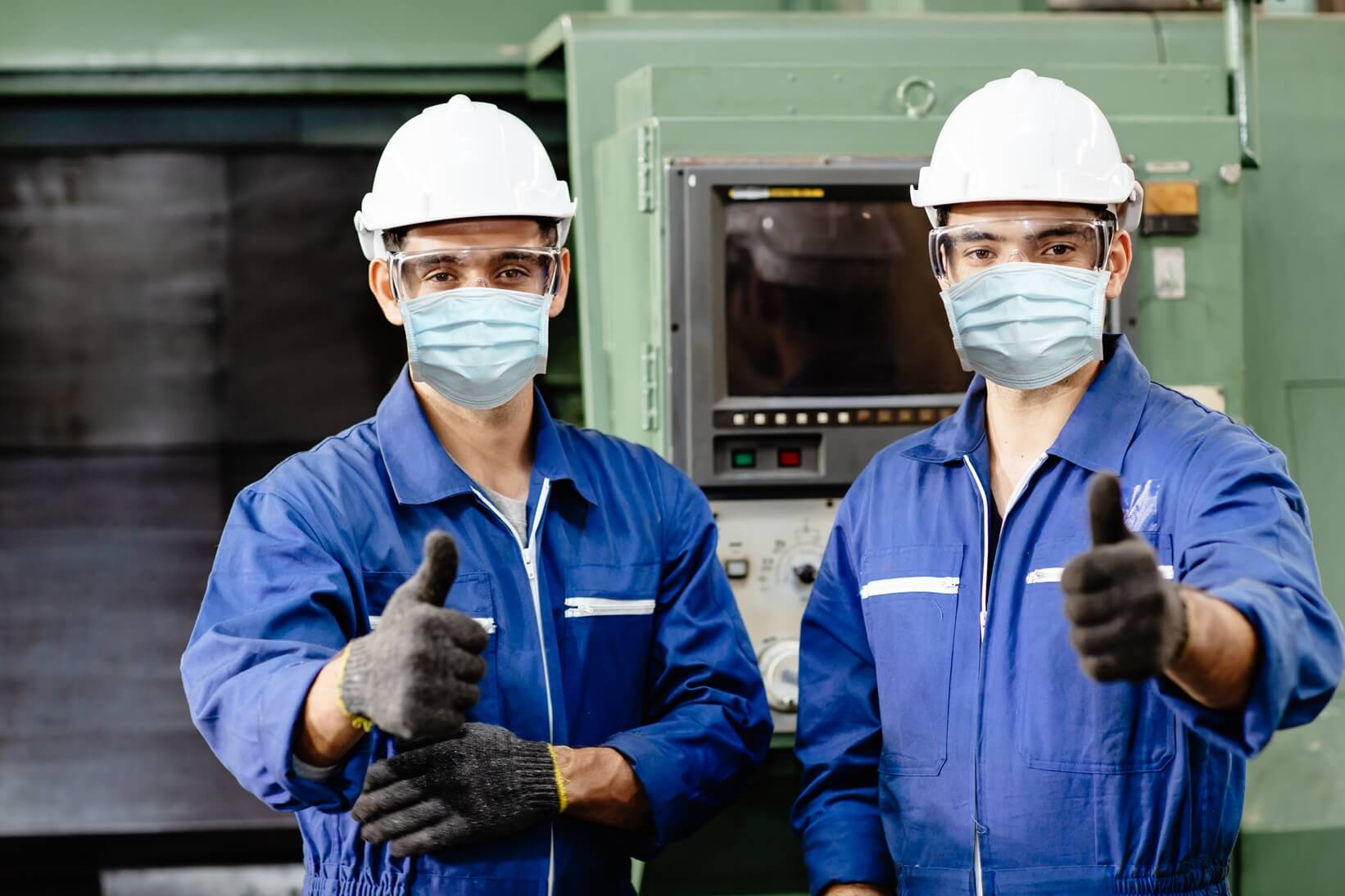

Taking measures for the tougher half of 2020 with Lynx Global
April 5th, 2020
No matter in which country and industry your company is operating in; qualified precautions are needed to be taken urgently against the impact of the inflation and the recession in global economy which both have been growing together slowly but steadily since the beginning of 2019. As it’s inevitable that there will be the negative results on every single market regarding the amount and value of the business and income; it’s vital to plan a solid program to follow ahead for 2020.
On both sides of the table as; supply chain management with related purchasing and procurement operations support and business development with related marketing and sales operations support; as Lynx Global; we focus on providing the required pragmatic and constructive adjustments and contributions to the businesses of our customers and supplier partners that will keep their position in the market stable while the long-term effects of the global economic developments bring results over their domestic and international competitors by the nature of deal in a range of areas.
While the conditions are getting tougher for all the manufacturers and dealers in the markets that shrink and mean less quantitative demand and lower profit rates; it won’t be possible to survive for the companies which will insist on keeping their traditional business instruments and habits with their present possibilities and capabilities in both operational sides mentioned above in the coming couple of years before the beginning of the economic melioration. At the end; our customers, our own organization and our supplier partners; we all always reap what we saw in our business.
There is potentially a period of greater stability ahead, if the companies focus on the long-term picture and plan smartly, act carefully and get solid results patiently through a professional cooperation just like Lynx Global provides rather than constantly reacting to speculations. Passing through these tough times is a challenge for the businesses of our customers and supplier partners, naturally for us as well. However; we can manage it by the strong cooperation models we bring through our efficient and productive benchmark studies in our business units.
Having been in a quite long period of low or no inflation and recession; many younger managers have no real experience of what these situations mean to a business or how to manage their effects on budgets, plannings and operations etc. The best advice is not to panic. There are steps that can be taken quickly and simply to help bring costs and profits under control. You may begin with; analyzing whether to buy and sell locally or globally based on detailed comparisons of conditions, building up relationships with the right suppliers and customers for the realistic and satisfying costs and profits, constantly auditing the market prices of inputs and outputs that you buy or sell. Actually; the best way is that, you get professional help for all of them; as considering, we’re here at your service.


Lynx Global expands cooperation network with four new partnerships
March 5th, 2020
At the beginning of 2020, we made successful and result bringing business interviews with the Supply Chain Directors of two companies in the automotive industry and home appliances industry which both of them are the leading Tier-1 manufacturer suppliers in EMEA region in the fields they operate. In the same manner, we also realized two more fruitful meetings with the General Manager and Business Development Director of two companies which are doing great works, well respected in the field of tools, dies, moulds & fixtures design and manufacture.
As Lynx Global, we continue to grow our customers base together with our supplier partners base. These new four spectacular companies which are joining to our cooperation network brought a significant amount of expertise, experience, capability, capacity and potential to our all activities in the fields that we operate, especially; while all related players across these industrial fields are dealing with the effects of rising costs on margins and profits.
We’re witnessing more companies than ever are recognising the value of cooperating with us.
Increasing the number of our large scaled and well known customers with new ones brings the result of providing more chance to our respected supplier partners which are direct manufacturers always intend to grow up their business by providing their high quality and competitive products & services with remarkable flexibilities. At the end; this is the way to the cooperation that will bring more work, higher productivity, better profitability and the most stable business development by related marketing and sales operations we’ll be always operating within.
Increasing the number of our highly qualified and competitive supplier partners which are direct manufacturers and have considerable flexibilities makes it possible for our large scaled and well known customers to improve their purchasing and procurement costs and develop their supply chain management by obtaining the high quality and competitive products & services with considerable flexibilities. At the end; this is the way to the the cooperation that will bring cost reduction, higher margins, better flexibility and the most steady supply chain development by the related purchasing and procurement operations with the required quality.
We understand accurately and exactly what our customers and our supplier partners are looking for in terms of value and this is it, what makes the role of Lynx Global invaluable. All education, training, knowledge, experience, vision, diligence, devotion and focus of our team members are united as one when we begin a new project. United as one, for responding accurately and exactly to our customers and supplier partners. We shall always continue to expand our cooperation network in a professional manner with respected, qualified, functional and potential promising companies.

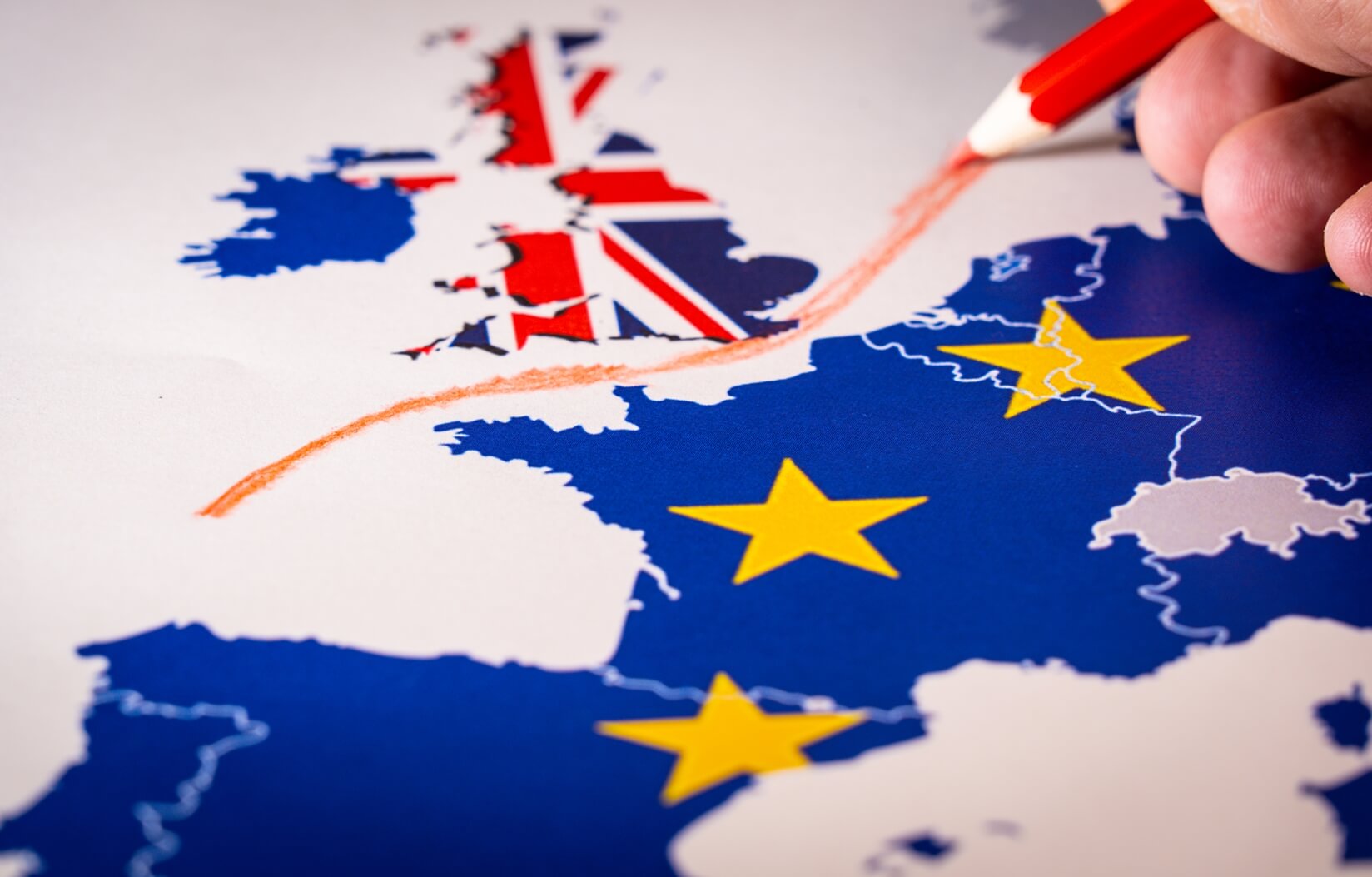
Make sure you are ready for Brexit with Lynx Global
February 5th, 2020
As Lynx Global, we advise our customers and supplier partners to take steps now to “Brexit-proof” their businesses in advance of the UK’s exit from the EU. With uncertainty still surrounding the details of Brexit; including both the supply chain operations implications and the availability of materials and services, besides the possible effects on business development at export sales operations; we decisively urge companies to implement the necessary measures to protect the stability of their all operations together with their savings and earnings as best as it is possible by cooperating with us.
The big picture may seem daunting, however, there are still steps that every company can take to “Brexit-proof” their business, to an extent at least. We’re already working with many of our customers and supplier partners to help put the measures in place which are needed to help them to continue their business operations through what will clearly be a challenging market for some time to come. Like; protecting supply chain with product availability and business development with fulfilling sales orders within the UK or from inside the EU and by also exploring non-UK & non-EU options.
On the other hand; as we are building flexibility into the systems, so; that our customers and supplier partners will still be able to quickly, cost-effectively and with maintained profit rates; respond to; changes in sources at supply chain with purchasing and procurement operations and also to changes in customers at business development with marketing and sales operations in a stable and sustainable manner is vital as well. It is critical; not to rely on specific materials and services or their locations to buy and again not to rely on exclusive or strictly authorized buyers or particular destinations to sell.
We are always keeping our eyes open for alternatives. For the alternatives for all your inputs and their manufacturers, that have been subject to cooperate to supply from UK and for the alternatives for all your outputs and their customers that have been subject to cooperate to sell to UK; by considering the worst case scenarios. We stay informed about what’s happening and look behind the “doom and gloom” headlines to the s from supply chain s to buyers associations, ask both sides to get up-to-date regular market situation. Good intelligence brings proactive advantages.
All our focus is for keeping the business of our customers and supplier partners stable by continuing savings and earnings in an environment where their company operations at both sides as supply chain and business development will not be affected in any negative way regarding the approaching Brexit situation. We are designing possible scenarios and preparing ourselves, our customers and supplier partners as if all those will indeed happen, then; finding alternative inputs, outputs, manufacturer suppliers, customers, markets and adjusting all preparations for possible business transfers including related commercial & technical details and requirements as proactive measures.
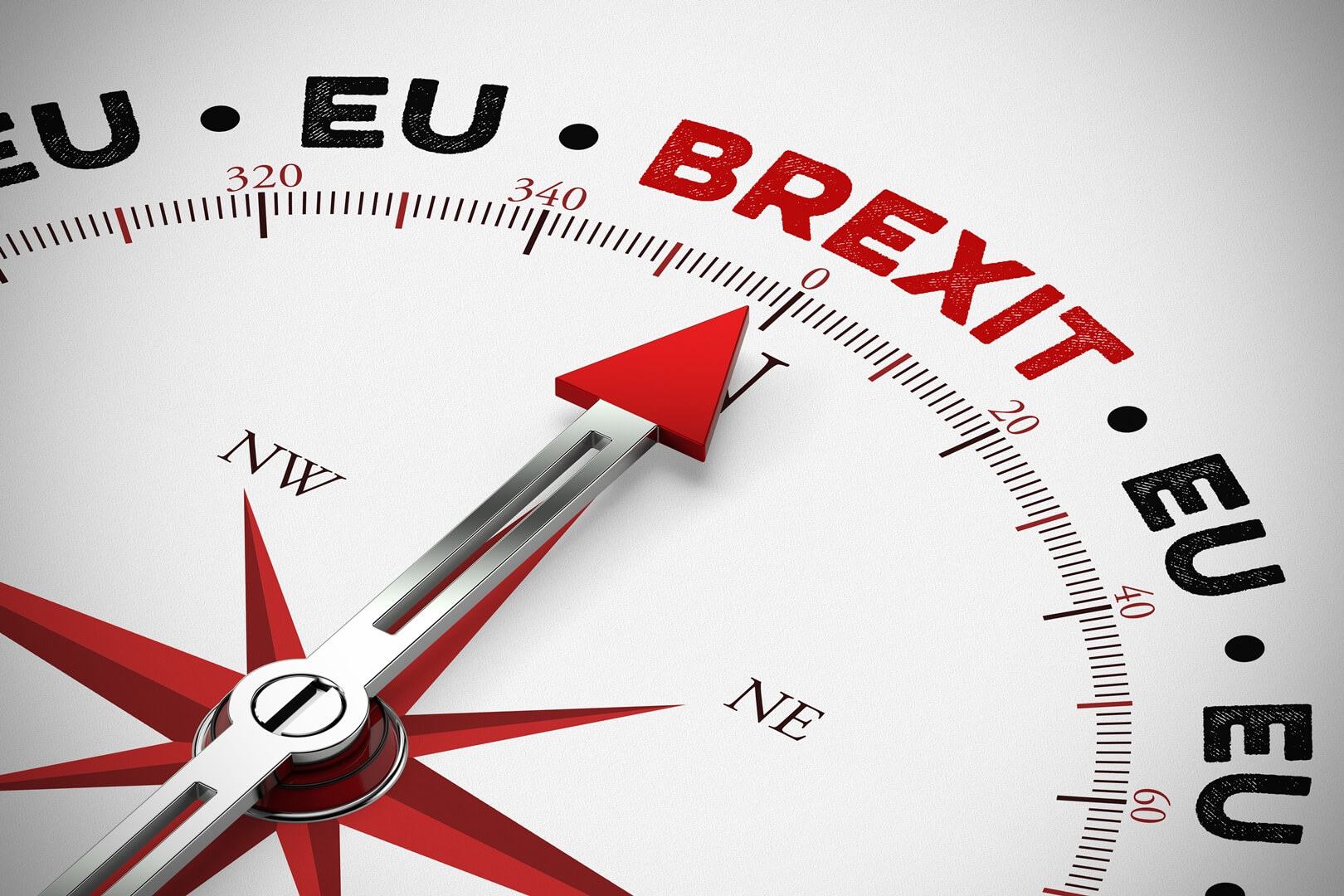
Cookies are used on this site to improve the user experience and to make the site work more efficiently. For more information, please read our Cookie Policy.
